

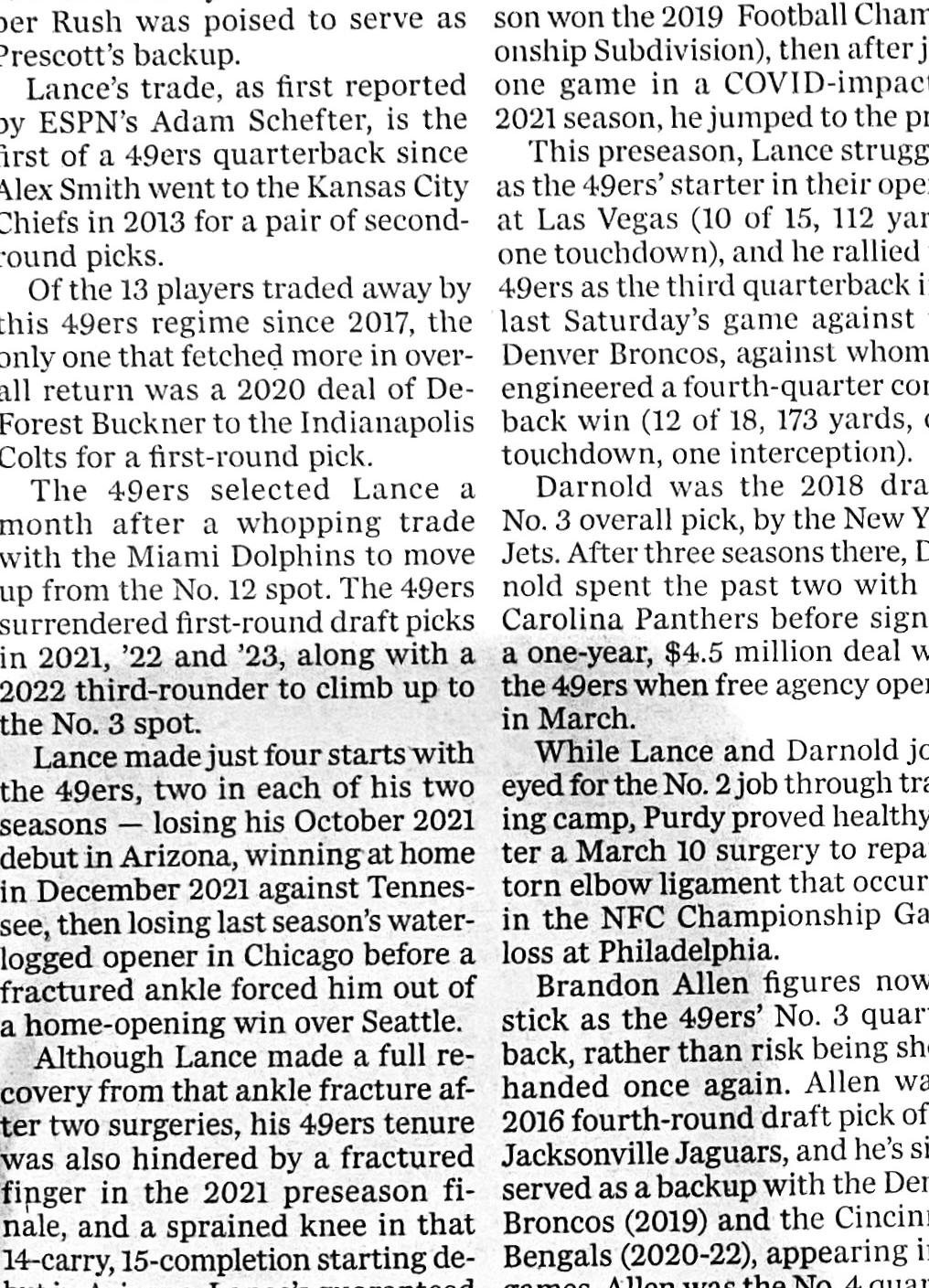


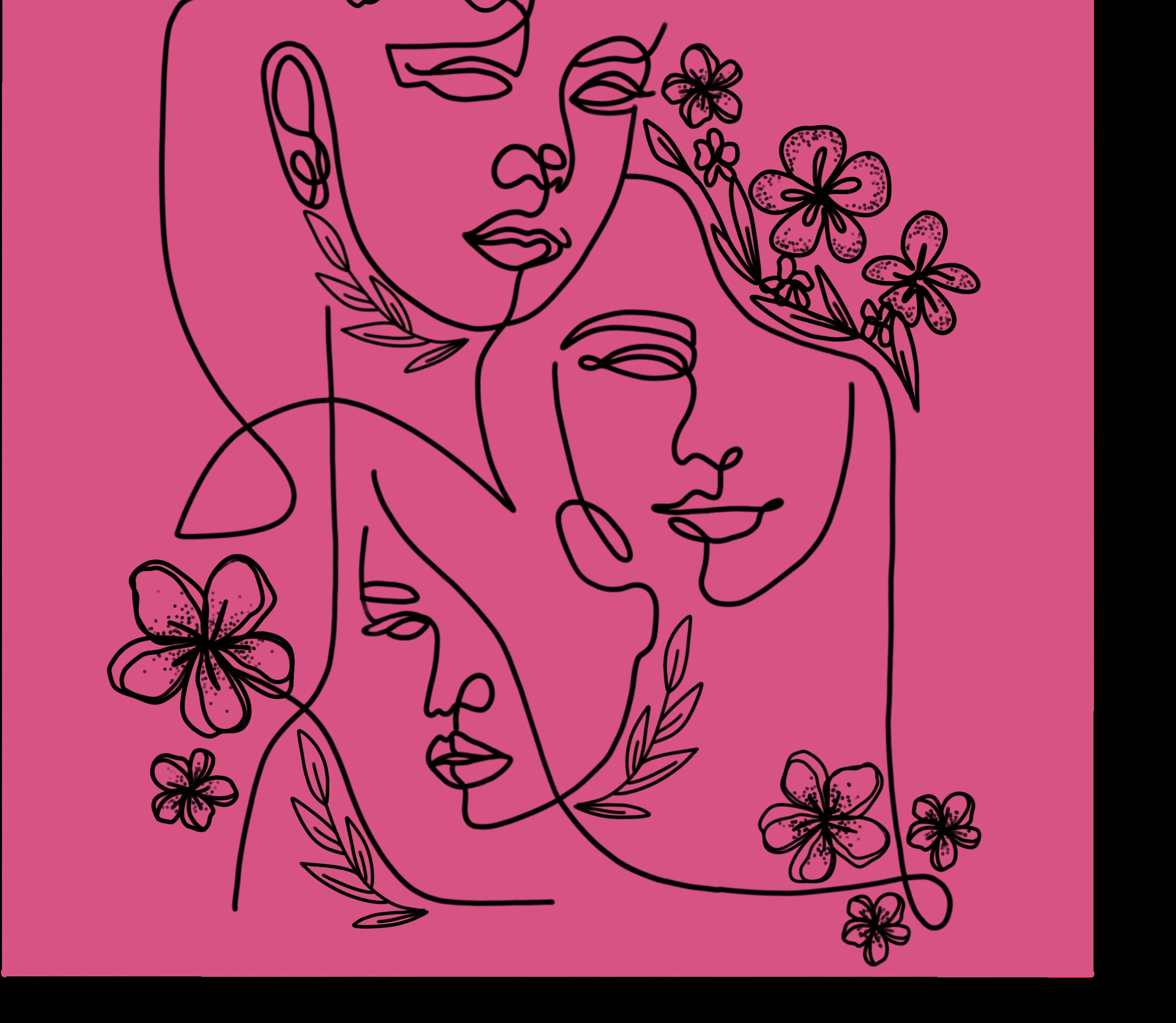















Yellow roses were the official symbol of the suffragette movement in the 1900s, challenging the red-rose anti-suffragists.
Yellow mimosa flowers, the official flowers of International Women’s Day, represent female sensitivity and sensibility.
In Asian cultures, chrysanthemums represent longevity, vitality, and optimism.
Often used on Mother’s Day, pink carnations symbolize gratitude and maternal love.
Marigolds are an integral part of Mexican culture, representing not only a connection between the dead and living but also purity and divinity.
Cherry and plum blossoms symbolize feminine beauty, power, and endurance, blooming during the winter.
With the ability to flourish regardless of their surrounding environment, cistus flowers embody resilience.
Lavender flowers, the symbol for the Lavender Menace–a fight for the inclusion of lesbian women in the feminist movement–represents LGBTQ+ resistance and empowerment.
Bright yellow daffodils that bloom through winter storms represent resilience, strength, and hope.
With a bulb connecting hundreds of smaller blossoms, allium flowers represent unity and prosperity.
Gladioluses' tall stems symbolize character, endurance, and moral integrity.
Blue hydrangeas represent serenity and gratitude.

Growing from the mud and river, pink lotuses represent remaining true to oneself amidst a world of negativity.
The name of this Mark pays homage to the trailblazers of Ms. Magazine, who continue to face issues of gender equity head-on. Its surrealist, whimsical collage styles of the 1950s reflect the absurd realities women still continue to face today.
With bold, blooming flowers contrasted with elegant, minimalistic fonts, the magazine reflects flourishing female beauty, strength, and resilience amidst a darkening world. Each flower featured symbolizes a unique characteristic of feminism. Read more about them to the left.
Editors-in-Chief
Natalie Fishman, Sonia Freedman, Dylan Lanier, Cleo Rehkopf, Sarah Weintraut Sports Editors
Chase Trigg, Sam Leslie Design Leads
Celine Chien, Ben Siegel Copy Editors Jolene Chu, Tessa Ellingson, Collin Goel, Allegra Hoddie, Leehan Kim, Ameya Nori, Arden Margulis, Lindsay Park, Amala Raj, Celeste Zucker Illustrators
DonnaBella Gaetano, Sarah Larson, J Mandelstam Designers
Penelope Chapman, Kitty Cormican, Riona Faruqi, Tessa Goldman, Logan Greenbaum, Isabel Habibi, Becca Koenig, Jenna Lee, Eileen Liu, Amari Witt Staff Writers
Andrew Ahn, Damian Boye, Kate Budinger, Rose Chane, Mateo Cuellar-Koh, Mackenzie Danzig, Ellen Forte, Gaby Foster, Avery Galles, Brian Hoyle, Tiffany Karp, Niklas Klemmer, Peter Koren, Akemi Kwan, D’Anjou Paul Libunao, Karen Martinez, Riya Mehta, Sofia Merlino, Huraman Orujov, Nava Riahi, Michael Roman, Micaela Rubinsky, Isabel Seniawski, Jace Thomases, Jonathan Weeks Fish
Jim Friedrich Jose Arcadio McBlair Advisor John McBlair
Like many once-taboo terms, in the past couple decades, the words “feminism” and “feminist” have lost their bite, becoming overused and ambiguous. Though the mainstreaming of “feminism” has helped bring more awareness to many feminist causes, it has also had the unintended consequence of taking away much of the term’s power.
This is particularly detrimental because—contrary to popular belief—feminism is needed just as much today as it was needed in the past, simply for different reasons. The goals of feminists in the past were easier to identify because there were explicit legal structures– like being denied the right to vote, the right to own a credit card, and the right to file for a divorce–that barred them from equality. Some of these more obvious goals, like making sure that reports of sexual assault are taken seriously (pg. 26), still haven’t been solved. However, many of the newer goals of feminism today, such as making sure women aren’t dismissed as hysterical when they express genuine health concerns (pg. 42) and the persistence of impossibly high standards for women in positions of power (pg. 40), are equally important, but harder to resolve. The goals of feminists today often don't have clear solutions. For those reasons, even though the problems themselves might not be as objectively critical as they were in the past, addressing gender inequity requires just as much fervor as before. To be a modern feminist requires us to believe we still need radical change to achieve true gender equality. Addressing these issues requires steadfast resistance to the relative numbness that comes with the desensitization of feminist terminology and a conviction to reinvigorate them. To do so, it is
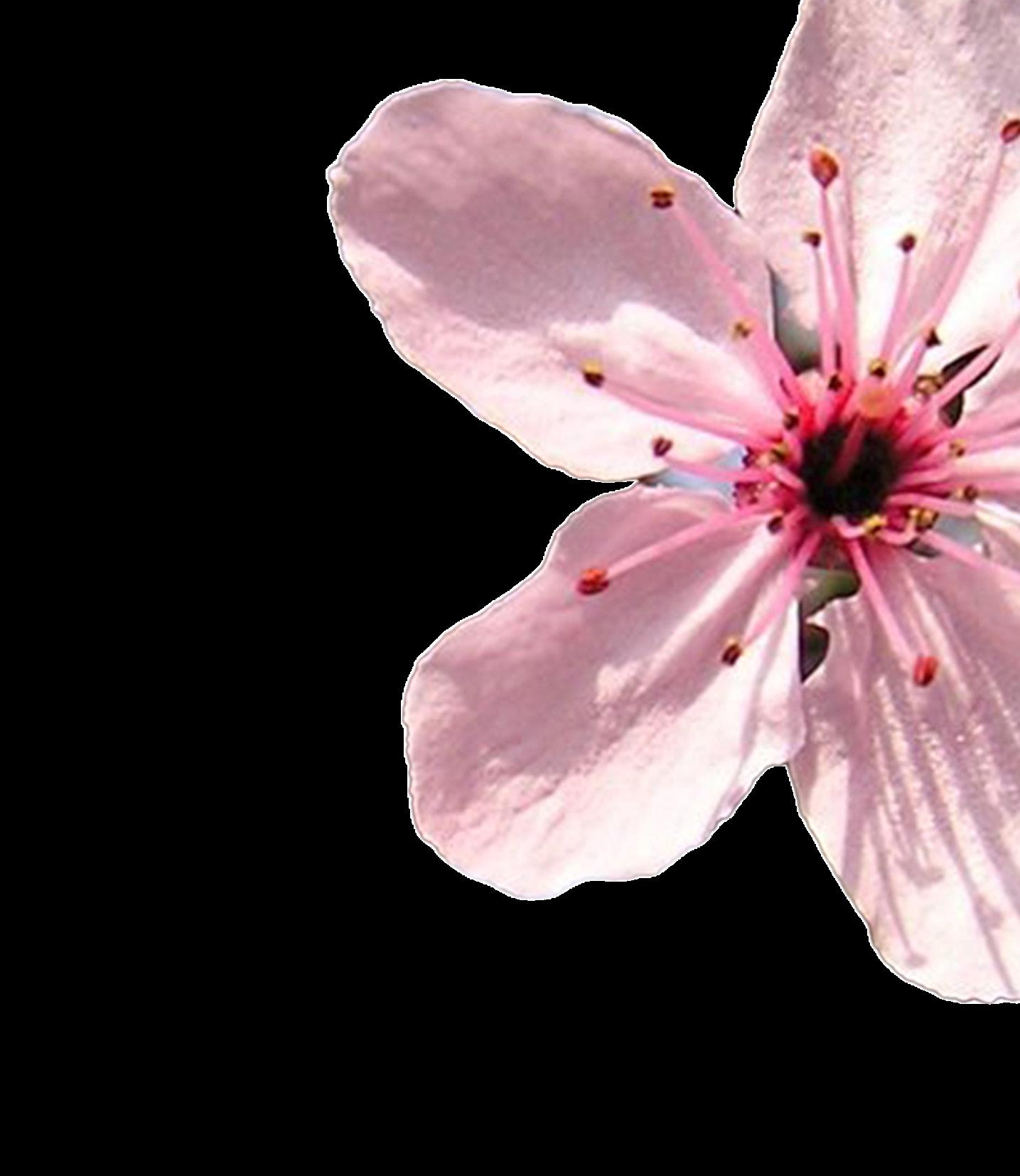
Through this edition of The Mark, we hope to inspire demoralized feminists and perhaps rally some new ones to the essential cause. Featuring accounts of sobering reality intertwined with inspiring stories of resilience and brilliance, we hope you enjoy Ms. Mark
Happy reading,








“Making sure that everyone in our society is on equal standing and has equal opportunities. Feminism fights for all women: Black women, queer women, trans women, everyone.”
“Being a strong, independent .”
“I feel like feminism doesn’t fit under a single definition, it has an expanding definition that's unique to everyone.”

“Being a woman sucks, and so do men. Feminism is about making life as a woman stop sucking.”
“Respecting women’s diverse experiences and supporting all women.”
“Feminism is independence. Not having to rely on a man.”
“Girl power!”

“Bringing everyone and putting nobody down.”

“Taking back what has been taken away from us and feeling comfortable and confident as a woman in a world that hasn’t been rooting for us.”
“Understanding the struggles of being a woman–there’s
an
unspoken code to it.”
“Showing who I truly am and expressing myself in any way that I can.”




Men are becoming more conservative and women more liberal. What does this mean for M-A?
Since 2014, women between the ages of 18 and 29 have steadily become more liberal each year, while young men have not. This pattern has become a phenomenon in nearly all developed democracies across the globe, with women consistently diverging ideologically from their male peers.
Even in the heart of the Bay Area–one of the most liberal places in the U.S.–this political divide has become noticeable across M-A’s campus.

Many first point to recent polarizing events such as the #MeToo movement and the overturning of Roe in 2022 as causes of the growing divide. In 2022, abortion was the number one voting issue for 61% of women, but only 32% of men.
The rise of social media amplifies these issues by allowing users to share their ideas with larger audiences. Social media also increases the presence of echo chambers, where algorithms curate information to align with users’ interests, limiting their exposure to opposing ideas. Some examples of growing gendered community
forums and groups include r/Mensrights, #NotAllMen, r/FemaleDatingStrategy, and South Korea’s 4B Movement.
Social media has also served as a catalyst for the rise in cultural entrepreneurs or influencers–like Donald Trump and Andrew Tate–who, according to Stanford researcher Alice Evans, “capitalize on new technologies by building echo chambers” that create spaces to generate “animosity, shaming, and vilification.”
These figures take advantage of the global trend of growing zero-sum sentiments, which is directly correlated with decreased generational wealth. Zero-sum sentiments create the false idea that one side must suffer so the other can benefit, and the existence of this mentality could explain why some may jump to blame the other gender as responsible for their own suffering.
Notable cultural entrepreneurs include Andrew Tate, a pronounced right-wing figure who gained his platform by appealing to insecure male audiences, capitalizing on traditional masculine ideals, and degrading women. more about toxic masculinity on pg. 36). In 2023, Tate posted on his Twitter,
“Men are not designed to be comfortable. They want to achieve. They want to feel pain and suffering. They want to conquer something.” Tate was also featured on Fox

bragged about sexual assault.
The difference between Trump’s approval ratings among men and women reached a historic all-time high of 22% in 2018. In 2016’s election, 52% of men voted for him, compared to only 39% of women.
Alongside the male exodus from the Democratic party–in which the number of Democratic males has decreased from 55% in 2008 to 38% in 2020–is an even larger number of women becoming increasingly liberal. from 1999-2013. 30% of women aged 18-29 identified as liberal, and this grew to 44% in 2020. The election of strongly anti-abortion Ronald Reagan, whose supporters opposed the Equal Rights Amendment and appealed to a largely traditional and Christian voter base in 1980, started the Republican Party’s major shift away from attracting female voters.


A rise in the number of single, young working women also contributes to the divide–68% of these women voted for Democrats in the 2022 midterm elections. Young women are more present on social media and are also disproportionately receiving more college degrees–which has had a direct effect on women voting more liberally.
While it may be difficult to come to a clear conclusion on the direct causes of this divide along gender between youth, one thing is clear: polarization is becoming noticeable in high school classrooms. Students of varying backgrounds face the pressure to be “politically correct” and are increasingly unwilling to engage with others’ opinions.

“The bigger thing that I’ve noticed has to do with students wanting a sanitized environment–not wanting to read certain literature or only wanting to read certain literature,” English teacher Lisa Otsuka said.
An anonymous male student said, “I personally am a conservative–I’m not a Trump fan, but I definitely hold on to conservative values as a Catholic. I don’t think that conservative values are tolerated in this school or this area, and I think that there’s absolutely pressure, either by the staff and the teachers here or just by our peers, to always hold these values that inform liberal or progressive views.”
“I noticed during in-class political conversations, I am more likely to hear from female students who want to discuss topics that relate to patriarchy,” social studies teacher Stephanie Cuff-Alvarado said.
“I see some liberal male students sharing their ideas, but I noticed a lot of male students remaining quiet in class,” Cuff-Alvarado added. “And that’s not necessarily because they have the most conservative ideas, but maybe they have some reticence to wade into those waters, to ask questions that may not be popular, or to be in the middle on things.”
Former M-A gender studies and U.S. history teacher Anne Olson said, “I would assume that there is some pressure for students to conform to liberal values. I also think that the concentration of progressive ideals where we live could result in people being more firm if they see things a different way, and being more vocal about it.”
Rather, Olson sees both sides taking a greater stance on their beliefs. “There’s a kind of fear of a scarcity of understanding that might cause some of these discussions to be more frequent or louder than they were previously,” she added.
Teachers say that one way to alleviate this divide is by encouraging connections between young men and women across political lines–being able to see eye-to-eye can decrease generalized assumptions made about other groups.
“I don’t think the classroom is a space for teachers to share their political ideas. A classroom should be a lab for learning, but part of that learning is students learning about themselves and how they see the world. I think that there should be room for students to explore, question, and think critically, but we also want to protect who we have in the classroom,” Olson said.
However, meeting in the middle has become difficult. Not only is the younger generation growing increasingly divided on political views, we are also becoming more intolerant of the other side. Over time, less people have dated people of opposing parties: a 1958 Gallup poll reported that 72% of respondents didn’t care if their daughter married “a Democrat or a Republican, with all other things being equal.” In 2016, only 45% said they didn’t care–respondents were evenly split on whether they wanted their child to marry a Democrat (28%) or a Republican (27%).

preventing the bridging of the gap between men and women. However, some teachers are more hopeful about dismantling the binary divide.
“Nobody’s a monolith, and that’s why I think that part of why the divide is happening is that we’re so focused on differences, but we’re actually more alike than we are different in so many ways,” Olson said.
In severe cases like South Korea, this divide has contributed to population decline, and something similar could manifest in the United States, where people are apprehensive towards dating people of opposing political beliefs. Party-affiliation filters on dating apps like Bumble and Tinder that allow users to sift through potential partners based on their political beliefs have become increasingly popular.
“It’s important that we look for those commonalities, look for those opportunities to learn from each other, and not fall into this polarized narrative: politics are inherently polarized because we’ve made them that way,” she added. “There’s a spectrum of gender, but we’ve made it into this binary, which also means that we can dismantle it. We just have to do that work to do it.”
by Kitty Cormican
Male teachers at M-A who identify as feminists share how they use their position to uplift female voices.
English teacher Jason Hunt said,
“It wasn’t until college that I ever thought of identifying as a feminist, because so much of the media uses feminism almost like a swear word.”
M-A is home to many male teachers on campus who are proud to be feminists. English teacher David Rosenberg said, “I think being a feminist is supporting

“It wasn’t until college that I ever thought of identifying as a feminist because so much of the media uses feminism almost like a swear word.”
are less likely to identify as feminists. In an M-A Chronicle survey, only 30.3% of 76 junior boys identified as feminists.
Interviewed teachers explained that they once did not feel comfortable identifying as feminists because they had a skewed perception of feminism, and identifying as a feminist conflicted with the societal expectations imposed on them.
Hunt said, “I grew up in a pretty conservative state, so even the women who were in power were critical of feminism, and some men were openly anti-woman and anti-feminist.”
He added, “Years ago, I overheard someone say, ‘It’s just as hard to look like Ken as it is to look like Barbie.’ Maybe that’s another reason why men fear feminism—because subconsciously they fear they are not ‘real men,’ or what society has connoted as the ‘ideal’ man. Paradoxically, what gives men so much power can also be the source of so much pain—the impossible ideals of manhood. No one person can be always strong, always fearless, always in control. ”
identifying myself in that way. Although I always would have said I supported women’s rights.”
Now with new perspectives, these teachers make a conscious effort to support and uplift the voices of women.
Hunt explained, “Before college, I pretty much only read work by white male authors in my English classrooms. Dismantling that habit and bringing in more female voices and voices of color is one of the most important things I can do as an English teacher.” He added, “When I call on students, I ask myself who I’m calling on and notice who raises their hands. If it's only my male or white students whose voices are being heard, I try to make sure that everyone gets an opportunity to speak, regardless of whether or not they’re raising their hand.”
Similarly, chemistry teacher Matthew Sandora said, “In high school, I wouldn’t
Sandora said, “I try to support all my students as much as possible, especially the girls because historically they have not been as well represented in science classes.” He added, “I also coach girls volleyball and, especially where I coach in San Jose, there's a kind of old-fashioned culture where girls are discouraged from playing sports. Some of my proudest



moments are when the girls I coach tell me, ‘I can't wait to have a daughter so she can play volleyball too.’ I always hope to influence the next generation.”

Teachers reflected on how feminism has positively influenced their lives; Sandora said, “As a teacher, being a feminist makes me better able to relate to my students. It's also allowed me to have better relationships with people because they know that I have compassion.”

English. He said, “Dr. Maimuna Islam was one of my first female teachers and teachers of color, and she really exposed me to a world outside of the little community that I had grown up in.”
that when I was 16 it would have been kind of hard for me to be able to read between the lines on this.
But, if you're not advocating for women's rights, what are you standing up for?”

Hunt said, “It's made me less judgmental, and it’s made it easier for me to recognize that my experience isn't the only one.”
All three teachers interviewed credited the powerful women in their lives for inspiring their beliefs and shaping them into the feminists they are today. Rosenberg said, “Growing up, my two amazing older sisters were a very powerful presence in my life.”
Sandora said, “My sister definitely inspires me. She owns her own company.”
Hunt pointed to one of his female professors who inspired him to teach
Hunt’s main advice on how to be a better feminist is to be a better listener. He said, “The first thing you have to do is ask yourself, ‘How has society benefited me?’ and, ‘If I'm benefiting, who is being harmed?’ Just pause, reflect, and then think.”
Rosenberg’s advice was to be more conscious of the fact that everyone faces a different experience. He said, “There are different expectations for people based on different societal factors and different historical baggage. If you don't take that into account, you're probably not leading that enriched of a life.”
He added, “For all the young gentlemen reading this, I know
“As a teacher, being a feminist makes me better able to relate to my students. It’s also allowed me to have better relationships with people because they





by Tessa Ellingson and Celeste Zucker

RMobbie Kellman Baxter ‘85 is the founder of the consulting firm Peninsula Strategies. She helps businesses build deeper relationships with their clients through the subscription model she discusses in her two books: The Membership Economy and The Forever Transaction.
After graduating from M-A, Baxter earned a degree in poetry from Harvard, worked as an urban developer in New York, attended Stanford’s School of Business, and returned to Menlo Park—living in a house directly across from M-A. “I can hear the bats, pool whistles, and loudspeakers,” she said.
Baxter worked in product management for five years and in strategy consulting for two. While on maternity leave, she transitioned into independent consulting. She studied subscriptions in-depth and then began working with companies like Netflix, SurveyMonkey, Microsoft, The Wall Street Journal, and the NBA.

Baxter’s advice to M-A students: “You don’t have to decide what you’re going to be passionate about for the rest of your life now. Pick a couple of things and do as much as you can with them.”
adahí Cornejo ‘11, who now goes by Maggie, was born and raised in North Fair Oaks. As the daughter of Mexican immigrants, she always felt as if she had an added layer of awareness about many issues in her community. Girls Middle School, an all-girls private school in Palo Alto, taught Cornejo the power of her voice and she applied it in student councils.
At M-A, Cornejo was part of the cheer team and the Computer Academy. She fell in love with her government class during her senior year and started working at the polls.
Cornejo attended college at San Jose State University, where she majored in political science and minored in Spanish. She then served as a legislative aide for the County Supervisor for District 4. She now works as the Director of Operations for the Boys and Girls Club.
On the value of representation, Cornejo said, “When I was doing internships and looking into government, I never really had a role model and I feel like it’s my responsibility to give back to the community that raised me.”

Cornejo’s advice for M-A students: “Don’t let whatever is going on in your life take you from your dreams and goals, especially in careers that are dominated by a certain group or just feel unreachable.”
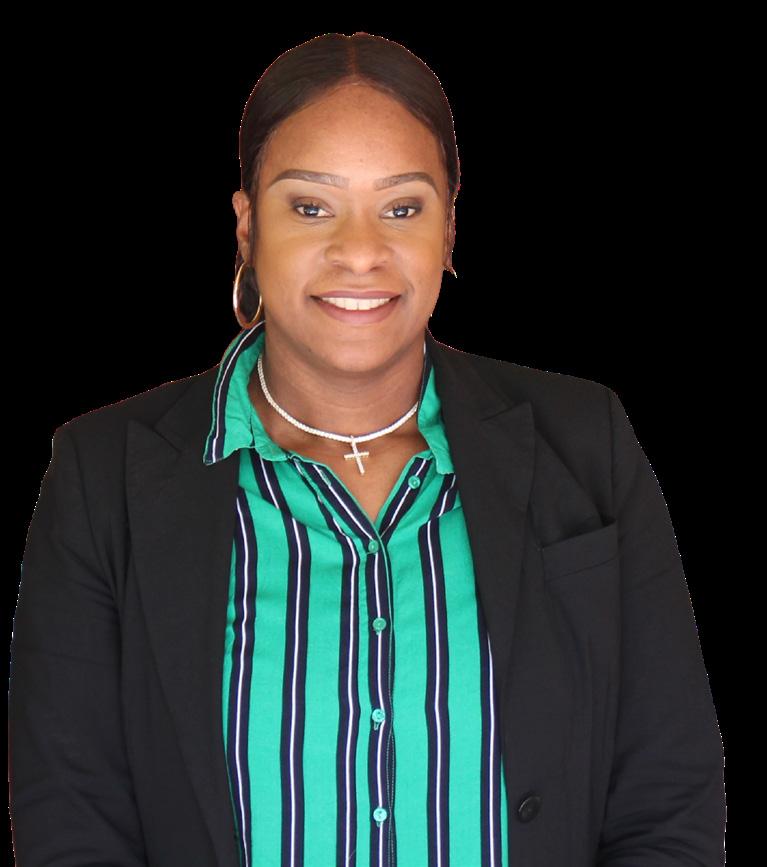





Adrian Sledge ‘02 went from a student-athlete to a staff member, earning many accolades for basketball and track. As an incoming freshman, Sledge was new to both sports. After one year on JV basketball, she was moved up to varsity and won Most Valuable Player and the Gatorade Athlete Will to Win award.
After she started playing basketball, the M-A track coach asked her to run for the team. In her freshman year, she became the captain of the varsity team. She said coaches and teachers always told her, “‘You’re not the most verbal leader, but you lead by example.’”
Sledge continued playing basketball at Allan Hancock College and Cal State East Bay, where she majored in English. She started working at M-A in 2008 in the Academic Resource Department as a Senior Instructional Associate and Department Manager. She said, “I loved being able to keep all the data updated, and found that it made an impact on the department, and our students’ success.” In 2022, Sledge became the guidance office’s Data Information Specialist.

Sledge’s advice for future educators: “Sometimes you have to lead with love; sometimes you have to lead with listening. It can really go a long way and impact every person you come across.”
“It must be hard for other runners in CCS to know they will always be chased down by her. More importantly, though, she’s a wonderful teammate,” said cross-country coach John Hale when asked about senior Tatum Olesen.
Olesen is San Mateo Daily Journal’s 22-23 Girls’ Athlete of the Year as well as the 2023 Central Coast Section (CCS) Cross Country Runner of the Year. Olesen will continue her running career at the University of Virginia, and will undoubtedly leave a lasting legacy at M-A as one of the most impressive athletes in the school's history.
While at M-A Olesen has won the CCS Division I Cross Country Championship for two consecutive years, and placed seventh at the state championships in her junior year and sixth in her senior year.
She placed third at the CCS Division I Track and Field Championship and seventh at the state competition in the 800-meter race as a sophomore; as a junior, she placed second at CCS and seventh at state in the same race. She was also the anchor of the girls 4x1600 team that ran the fastest time in the country and placed fourth at the Nike Outdoor Nationals.
On top of all that, she holds two school records: the 800-meter at 2:09 and the mile at 4:37.
In addition to cross country and track, she has also played on M-A’s varsity soccer team all four years of high school, making her one of few three-sport varsity athletes at the school.
As a seasoned runner, Olesen enjoys mentoring newer teammates. “I like being a leader on the team alongside some of
the other seniors,” she said. “It’s nice to be able to help newer runners because, when I was a young runner, I really loved having people to look up to and who helped me push myself in workouts.”
Sophomore Paige McGaraghan said, “Tatum is relentlessly positive and always inspires me to do my best. She’s been such a great role model for me the whole time I’ve been here.”
Senior Annie Pflaum, who has been running with Olesen since seventh grade, shared, “She has always been an amazing runner, and she’s super humble about it, too. Even if there’s a super hard workout, she still makes practice the best part of the day.”
by Chase Trigg and Michael Roman photo courtesy of John Hale
“My sisters all played soccer and then transitioned to running in high school, which is part of why I started running.”
Olesen’s dad also ran track and field at Stanford University and ran professionally for eight years after college. Olesen said, “My dad’s experience in the sport has definitely helped with my running, and it has been nice to have him supporting me.”
However, Olesen’s decision to continue running in college was not straightforward. She said, “After my sophomore track season, I started to seriously consider running after high school, and I got really interested in it after I talked to various programs.”
To future runners, Olsen advised, “Just


by Dylan Lanier

“From the time of the historical Buddha, he accepted anyone into his order, anyone that would be interested

Rabbi Ilana Goldhaber-Gordon of Congregation Beth Jacob in Redwood City explained that, in some ways, Jewish women possessed greater opportunity than many other women in historical society, largely because Jewish women were deemed less threatening than Jewish men to the dominant cultures they lived within and as such often became breadwinners.
Historically, literacy rates among both Jewish men and women were comparatively much higher than those of the general populace. Judaism emphasizes the importance of education for all people, which Goldhaber-Gordon believes has promoted open-
In addition, she said, “The experience of living as an oppressed minority can have a way of ultimately making one more open and
Jewish women have always been allowed to divorce their partners, and every major Jewish movement released statements opposing the repeal of federal abortion protections.
Goldhaber-Gordon also shared, “There’s a concept of holy debate: that disagreement is an essential part of all intellectual engagement, especially religious engagement, and so that has enabled fairly rapid change. Another related idea is called D’rash, which is basically that we study all of our holy writings through creative interpretation, and that too has really enabled space for
However, she said, “Judaism has always been part of Western


Members of several religions share how an identity as a feminist fits and contradicts with religious beliefs.




The sad girl aesthetic, reigning over all four seasons with different color palettes, romanticizes sadness as beautiful. Micro-trends like the coquette aesthetic, characterized by bows, pastels, and a sad facial expression, boil down to the quintessential Sad Girl. The sad girl aesthetic glorifies sadness and encourages its participants to wallow in endless sadness. While some defend the sad girl aesthetic as a healthy and productive expression of emotion, it ultimately portrays women’s misery as a trend. When turned into an aesthetic—a beautiful, visualized style—the Sad Girl becomes an intentional performance of pain, not a call to; a highlight of the reality of mental health issues. The Sad Girl is an all-consuming identity: there’s Spotify’s ‘sad girl starter pack’ playlist boasting 1.5 million likes; a ‘Sad Girl Winter’ candle (which smells like “cotton clean fragrance with lavender,” by the way); Lana Del Rey’s “Pretty When You Cry,” an anthem emphasizing the beauty in suffering; and “crying girl makeup,” a blush-heavy look mimicking a postcry glow.
While music offers a creative outlet for vulnerability and sympathy, the sad girl music label confines artists and listeners. Sad music by men is portrayed as cathartic, intentional vulnerability, while sad music by women is trivialized and subjected to romanticization.
Lucy Dacus, a member of the popular sad girl band boygenius, said in a now-deleted tweet, “Sadness can be meaningful, but I got a bone to pick with the ‘sad girl indie’ genre, not the music that gets labeled as that, but the classification and commodification and perpetual expectation of women’s pain.”
Audrey Wollen coined the term Sad Girl Theory in 2014, stating female sadness is an act of protest against the patriarchy. In an interview with Nylon, she said, “Girls being sad has been
the of the
categorized as this act of passivity, and therefore, discounted from the history of activism.” Wollen calls for a revision of this history and the embrace of continuous sadness as the inherent reality of being a woman.
When female sadness is romanticized by the sad girl aesthetic, it becomes a performance instead of an expression of one’s true emotions. The New York Times article “Sofia Coppola and All the Sad Girls,” by Emily Yoshida, connects the Sad Girl Theory to the vivid trope of Coppola’s work (including Virgin Suicides and Priscilla): a girl gazing out a window. Yoshida said, “The romance of the Sad Girl is the dream of being a woman who sees far more than the people around her, even if circumstances allow her to do so little.”
The tragically beautiful woman has been around since Cleopatra, but the media exploits this trope by glamorizing sadness. Sylvia Plath’s writing about her depression and psychological breakdowns has been transformed by girls desiring to adopt her tragic life and death.
UCLA Psychology Professor Francis Steen offered one explanation for the rise of Sad Girls: “It’s always been possible to look around and think, ‘I’m not the most beautiful person in the world.’ A young girl could look at paintings of beautiful people that are idealized. The difference is now we have empowered people to access these things all the time on a device they keep in their pocket; Social media doesn’t convey all the different dimensions of a person.”
The sad girl aesthetic oversimplifies a larger issue. According to the Centers for Disease Control and Prevention (CDC), 57% of teenage girls reported feeling persistently sad or hopeless in 2021, up from 36% in 2011. Steen said, “If you’re feeling sad, maybe it’s comforting to some degree to see that you’re not alone and other people feel this way. But there’s a limit to that. It’s not such a nice thing to find out that lots of people are feeling sad and lonely, and it’s actually an epidemic society is not getting a handle on.”
Labeling media about heavy themes such as depression, coming of age, toxic relationships, race, and sexuality—and songs’ complex melodies and lyricism— as sad girl media reduces and underappreciates its complexity. The sad girl aesthetic normalizes women’s sadness as default, harming mental health movements and reducing Sad Girls’ emotions through a lens of beauty. As Plath’s daughter said, “The point of anguish at which my mother killed herself has been taken over by strangers, possessed, and reshaped.”
by Celeste Zucker

M-A Orchestra director William Flaherty said, “It’s possible, even today, to go all the way through a comprehensive program of music education and earn a Master’s degree in music without hearing about even some of the most famous female classical artists.” Since women first entered professional orchestras in 1913, they have made large strides. However, female representation in the modern orchestral repertoire has remained limited. Listen to a few extraordinary female composers whose stories highlight the incredible influence women have had on orchestral music.
Amy Beach, arguably the most famous female composer in history, struggled against the explicit instructions of her husband to keep out of the public eye and halt her career as a concert pianist. Following the death of her husband, she entered the limelight with the release of her Gaelic Symphony (1896), the first symphony ever composed by an American woman.
After submitting two pieces to the anonymous Berkshire Festival Competition, Rebecca Clarke rose to prominence as one of the most compelling composers of her generation. Although she narrowly lost the competition to the already-famous Ernest Bloch, she demonstrated her potential as a noteworthy composer. She is most well known for her breakout pieces submitted to the Berkshire Festival: Viola Sonata (1919) and Piano Trio (1921). Clarke’s pieces disrupted a space traditionally dominated by men; journalists even speculated her pieces were really composed by a man.
Florence Price fought through racial prejudice alongside gender inequality within the music industry and is most well known for her Fantasie Négre (1932) and Symphony No. 1 (1933). Born to a Black father and white mother, she passed as a Mexican-American student in college to avoid anti-Black prejudice. At age 41, she divorced her husband and supported her two children by playing the organ at silent film screenings, with her success as a composer eventually bringing her performances to a bigger stage. She was the first Black woman to have her compositions performed by a major American orchestra and was a part of the Chicago Black Renaissance, devoting her work to the advancement of AfricanAmericans within classical music.
by Andrew Ahn
Jennifer Higdon has earned international acclaim for a range of creative compositions, most notably her Percussion Concerto (2006). She was awarded the Pulitzer Prize of Music in 2010 for her Violin Concerto, a full-circle moment for her as a self-taught violinist in her teens. While she began composing classical music relatively late in life, Higdon has already received three Grammys for her changemaking compositions and has one of the most performed repertoires of any living composer.








...how girls help each other, like when




...how
women are still gaining rights and getting to be a part of new industries. It’s really exciting how there are so many new opportunities ahead of us, and I’m excited that I get to be a part of that in the future.”

...being powerful and assertive, yet kind and loving.”







by Logan Greenbaum
joined in 2022. “I saw the Raging Grannies at a protest and thought, ‘This is right up
The Raging Grannies allow older women to fight ageist and sexist stigma. Granny Ruth said, “We all felt like our voices had long been ignored because we’re older women. But being a Raging Granny, people will listen instead of thinking that because we’re old women, we don’t have a lot to
Granny Lisa said, “We get attention, and we get respect. I mean, who’s going to arrest a grandma? People think, ‘If these old ladies believe so strongly in something,
At protests, the Grannies perform songs and street theater. They typically
“We get attention, and we get respect. I mean, who’s going to arrest a grandma?”
wear bright clothing, shawls, and aprons reminiscent of a stereotypical grandma. “The idea is to look like someone approachable, like this could be your grandmother protesting,” Granny Ruth said. “It gets people’s attention, and I think it’s a respect thing. If your grandma tells



The Grannies also customize their outfits to the topics of their protests. “Before Obamacare was passed, we were protesting outside Blue Cross/Blue Shield HQ in San Francisco,” Granny Ruth said. “It wasn’t our original idea, but we were ‘Billionaires




Republicans. It wasn’t easy, but we used vintage hats found at thrift stores and put on gloves and fake jewels to try to look the part.”
To protest for universal healthcare in the U.S. the Grannies donned hospital gowns, and one even wore a dramatic false rear. They held up signs asking, “Are you undercovered?”

learned you’ve got to stand up for yourself, you can’t let people mistreat you.”
Granny Ruth added, “Find camaraderie, find strength in numbers. We write to our congressmen, but that’s behind a computer. You have to believe in the street.”
She continued, “The more visual something is, the more impactful it is. You
“Don’t take things for granted. We never thought Roe would fall. We didn’t think we’d have to fight this fight again.”
Granny Ruth explained, “We were at a bus stop in downtown Palo Alto. Most of the people there were Grannies, but to add to the fun of this event, two Los Altos High School students joined us to help hold signs.”
Granny Ruth advised younger feminists, “Find your voice. You don’t need to parrot what everyone else is saying, but it’s perfectly okay to agree with people and carry on their ideas.”
Granny Lisa advised, “Don’t take things for granted. We never thought Roe would fall. We didn’t think we’d have to fight this fight again.”
could write a million letters to the editor, but a photo of a protest will do so much more. If somebody looks at the news and sees the photo, they’ll ask, ‘What are those people doing?’ That’s a bigger message.”
As for joining the Raging Grannies, many people might be surprised that grandmotherhood is not a requirement. “I don’t have grandchildren, but I am 65. So that makes me Granny-eligible,” Granny Lisa explained. “You don’t have to be a grandmother–we’ve had men sing with us, trans people sing with us—it doesn’t matter!”
The Bay Area Gaggle’s website echoes a similar sentiment: “Make friends, feel

































































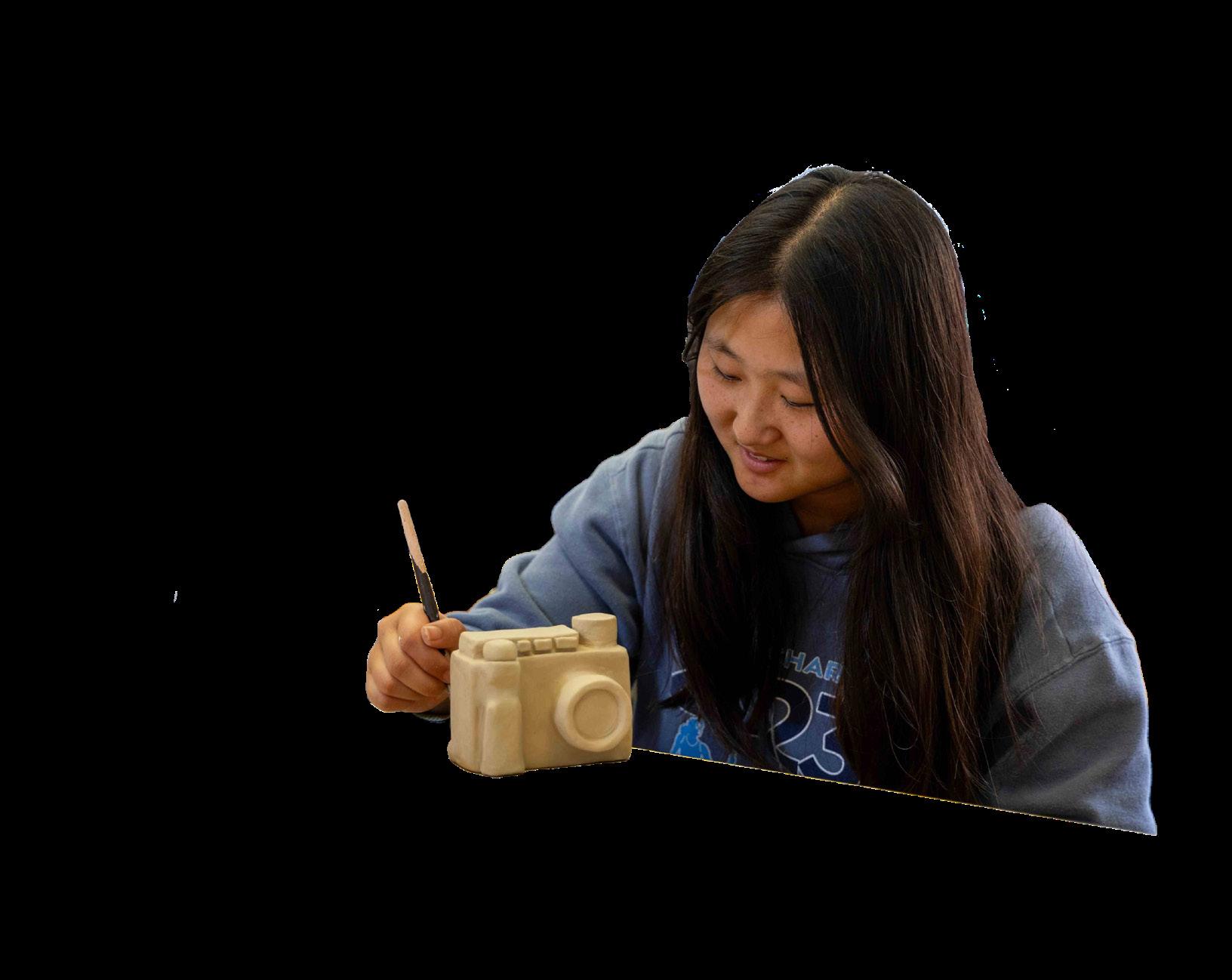




by Celine Chien and Eileen Liu
KARINA FLORES
Even before graduating in 2007, then-sophomore Karina Flores had promised herself that she would come back to M-A. Now, Flores works as the Intercultural Leadership teacher and Conflict Mediator.
Flores’ parents grew up in Zacatecas, a large city in central Mexico. They came to the States in 1984 and 1989 respectively, and finally settled in East Palo Alto. Flores grew up on O’Keefe Street, and, when she was 12, her parents gave birth to her younger brother.

In addition to her brother, Flores was also one of the oldest of 45 cousins, making her
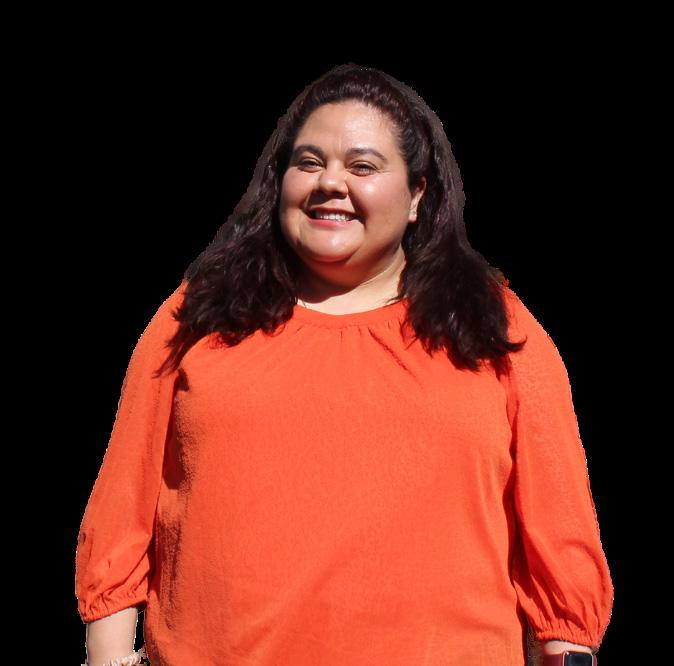
grow up with the pressure of being not only a role model, but also a translator and babysitter.
“I always knew I had a really big part to play in my family,” Flores said. “I remember helping my mom study for her U.S. citizenship test when I was in second or third grade while I was learning about American history.”
Flores joined the Tinsley program in second grade and attended Las Lomitas and La Entrada. Even though it was hard to adjust to the new environment–Flores looked nothing like her classmates–she still loved her experience at La Entrada.
From playing the clarinet, competing in a large variety of sports, to even joining the student activities program, Flores took it upon herself to work hard and make the most of her time in middle school. “My parents grew up in more extreme poverty. They definitely had the mindset of seeing everything as an opportunity and making sure that we worked hard for that,” Flores
back to the next generation. “You really have such a variety of populations that you can support and help at M-A. I think I really wanted to make sure that students could see themselves in someone else as well,” Flores said.
As Flores reflects on her adolescence, she wishes that she had more access to mental health resources early on in high school. “It just wasn’t talked about in my generation. I wish I had had more access to talk about those kinds of things earlier on, but I know that was something that I had to navigate in my adult life, and that was really challenging at times,” she said.
Flores added, “There are a lot of those burdens and pressures that sometimes fall on the first kid because it’s like, ‘Hey, you’re going to school, you’re supposed to know it.’ You’re supposed to be learning, but it’s really hard when you’re navigating those stressors of your family and school and maybe not even fully understanding the language as well, and you’re trying to fit in all at once. It’s a lot.”
For Flores, coming to M-A was another culture shock–she was now going to a school where half of the student body looked like her. At M-A, she connected the two communities she simultaneously grew up with, and learn even more

“I was kind of just on the go for many years just trying to get through school and trying to establish a good job for myself. I didn’t really stop and pause to reflect and really think of how far I had come personally and how far my family had come,” she said.
At M-A, Flores met staff that understood, inspired, and cared for her. The passion and understanding that she
Ethnic Studies teacher Lan Nguyen’s parents grew up in the midst of






Pacific Ocean with her brother to Long Beach, CA. Nguyen was born two years later.
“When I think about my experience compared to other Americans, I think I lack privilege in a lot of ways. But when I think about my parents’ experience, I have a lot of privilege,” Nguyen said. “I’ve heard stories where my parents ate grass and even chicken poop to survive. In the U.S., my parents took care of me and made sacrifices to make sure that my basic needs were met.”
From a young age, Nguyen had always felt like an outsider. As she transitioned from middle school to high school, Nguyen was bussed to a predominantly white school on the wealthier side of town. “There, I experienced internalized classism and racism,” she said. “I was surrounded by people who–on the surface–were happier because they had more. I was jealous that they didn’t have the struggle that I had. Instead of thinking there was something wrong with them, I internalized that there was something wrong with me.”
Listening to emo-pop soon became a way for Nguyen to cope with her mental health struggles. She fell in love with music journalism and started her own music publication where she got press passes to go to concerts for free.
After graduating high school, Nguyen enrolled at Northwestern University to become a music journalist. “I felt like my parents empowered me to follow my dreams, even if they wish I had different dreams,” she said.
But the comfort that Nguyen had felt when reporting soon left her. “As I was doing on-the-ground journalism, I had formed relationships
attached to these issues.”
“The journalism field is changing now, but back in the day, it seemed like you needed to have privilege to be a journalist–how could someone be covering poverty and not be emotionally attached to the poverty in that community?” Nguyen added.
After some soul searching, Nguyen discovered ethnic studies while at UCLA for post-graduate studies. Loving herself and understanding her own history was what truly helped her heal from her past struggles.
“Through ethnic studies, I learned to feel empowered in who I am as a person, and that’s something that I aspire to do for my students,” she said. “Whenever students write me feedback when they write essays about how ethnic studies taught them to love themselves, that really feels fulfilling to me.”
“Imiss the smell of the air over in Mexico. It smells dirtier, but it feels cleaner. It feels more refreshing over there. And when my grandparents and people from Mexico visit the U.S., they
vegetables from farms.
Gomez’s father was born in Guanajuato, Mexico and later immigrated to the U.S.
As the oldest child in the family, Gomez takes care of her brother, who is eleven years younger than her.
Aside from her family responsibilities, Gomez will also be the first in her family to attend college and feels pressure to excel academically. “My parents tell me I can’t get a job because I need to be 100% focused on school,” Gomez said.
Gomez sees a stark inequality between how she and her male relatives are treated in her family. “My cousin who’s three months younger has a girlfriend right now. I feel like there’s definitely a rank and hierarchy,” Gomez said.
“If I do the smallest thing, it creates this enormous idea of what people think I might be doing. When I have a candle on in my room, my parents are like, ‘Are you smoking right now?’” she said.
After high school, Gomez plans to pursue either psychiatry or accounting. “I really want to pursue a job so I can help provide for my family. I have the pressure of taking care of them and giving back for what they’ve done for me. I have guilt whenever they get me stuff," she said.
communities that I was interviewing,”
professors said that I was too








KARINA FLORES
Incluso antes de graduarse en 2007, Karina Flores, entonces estudiante de segundo año, se había prometido a sí misma que volvería a M-A. Ahora, Flores es maestra del programa de Liderazgo Intercultural y mediadora de conflictos. Los padres de Flores crecieron en Zacatecas, una gran ciudad en el centro de México, vinieron a los Estados Unidos en 1984 y 1989 respectivamente y finalmente se quedaron en East Palo Alto. Flores creció en O’Keefe Street y, cuando tenía 12 años, sus padres dieron a luz a su hermano menor.
Además de su hermano, Flores también fue una de las mayores de 45 primos, lo que la hizo crecer con la presión de ser no solo un modelo a seguir, sino también traductora y niñera.
“Siempre supe que
tenía un papel muy importante que desempeñar en mi familia”, dijo Flores. “Recuerdo ayudando a mi mamá a estudiar para su examen de ciudadanía estadounidense cuando estaba en segundo o tercer grado mientras aprendía sobre la historia del EEUU”.
Flores asistió al programa Tinsley en segundo grado y asistió a Las Lomitas y La Entrada. Aunque fue difícil adaptarse al nuevo entorno (Flores no se parecía en nada a sus compañeros de clase), todavía le encantó su experiencia en La Entrada.

Flores tocó el clarinete, una gran variedad de deportes e incluso asistió al programa de actividades estudiantiles, Flores se encargó de trabajar duro y aprovechar al máximo su tiempo en la escuela secundaria. “Mis padres crecieron en una pobreza más extrema. Tenían la mentalidad de ver todo como una oportunidad y asegurarse de que trabajáramos duro para eso”, dijo Flores.
Para Flores, venir a M-A fue otro choque cultural: ahora iba a una escuela donde la mitad de los estudiantes se parecían como ella. En M-A, conectó las dos comunidades en las que creció simultáneamente y aprendió aún más sobre sí misma.
En M-A, Flores conoció a maestros que la entendió, la inspiró y la cuidó. La
tenido más acceso a la salud mental desde el principio de la escuela secundaria. “Simplemente no se hablaba de eso en mi generación. Desearía haber tenido más acceso para hablar sobre ese tipo de cosas antes, pero sé que fue algo que tuve que afrontar en mi vida adulta, y que a veces fue realmente desafiante”, dijo.
Flores agregó: “Hay muchas cargas y presiones que a veces recaen sobre el hijo mayor o el primero porque es como, ‘Oye, vas a ir a la escuela, se supone que debes saberlo’. Estás aprendiendo, pero es difícil cuando estás atravesando esos factores estresantes de la familia y la escuela y tal vez ni siquiera comprendes completamente el idioma, y estás tratando de encajar todo a la vez. Es mucho”.
“Estuve en movimiento durante muchos años, tratando de terminar la escuela y de conseguir un buen trabajo. Realmente no me detuve a reflexionar y pensar realmente en lo lejos que había llegado personalmente y lo lejos que había llegado mi familia”, dijo Flores.
aestra de Estudios Étnicos, los padres de Lan Nguyen crecieron durante la guerra de Vietnam, viviendo en constante temor de bombas. “Normalmente tenían un plan de dónde esconderse en la casa en caso de que hubiera una bomba—habían muchos sustos”, dijo.
Después de que terminó la guerra, los padres de Nguyen pasaron 15 años más en Vietnam antes de mudarse del otro lado del Océano Pácifico con su hermano en Long Beach, CA. Nguyen nació dos años después.



“Cuando pienso en mi experiencia comparada a otros americanos, pienso que





tengo una falta de privilegios en muchas maneras. Pero cuando pienso sobre la experiencia de mis padres, tengo mucho privilegio”, dijo. “He escuchado historias sobre mis padres que tuvieron que comer pasto y caca de pollo para sobrevivir. En los Estados Unidos, mis padres cuidaron de mí y sacrificaron mucho para que mis necesidades básicas fueran atendidas.”
Desde una edad joven, Nguyen siempre se sintió como una forastera. Mientras ella hacía la transición desde la escuela secundaria a la secundaria, Nguyen atendió una escuela predominantemente blanca en una parte más rica de su pueblo. “Ahí experimenté con clasismo y racismo internalizado”, dijo. “Estaba alrededor con gente—que en la superficie— estaban felices porque tenían más. Estaba celosa de que ellos no tuvieran la misma lucha que yo. Envés de pensar que había algo malo con ellos, internalicé que había algo malo conmigo”.
Escuchar a pop-emo se convirtió en una manera en que Nguyen afrontó sus problemas mentales. Se enamoró del periodismo musical y empezó su propia publicación de música donde consiguió pases de prensa para ir a conciertos gratis.
estudios de posgrado. Amandose a ella misma y entendiendo su historia fue lo que en verdad le ayudó a sanar sus luchas del pasado.
“A través de estudios étnicos, aprendí a sentirme empoderada respecto de quién soy como persona, y eso es algo que aspiro a hacer por mis alumnos”, dijo. “Siempre que los estudiantes me escriben comentarios sobre cómo los estudios étnicos les enseñaron a amarse a sí mismos, eso me resulta realmente gratificante”.

que no puedo trabajar porque tengo que enfocarme 100% en la escuela”, dijo.
“Por estudios étnicos, aprendí a ser empoderada en quien soy como una persona, y eso es algo que aspiro hacer para mis estudiantes,” dijo. “Cuando mis estudiantes me escriben comentarios cuando escriben sus ensayos sobre cómo los estudios étnicos les enseñaron cómo amarse, eso realmente me llena de orgullo."
“EGomez ve una marcada desigualdad entre como ella y sus familiares que son hombres son tratados en su familia. “Mi primo que es tres meses mayor que yo tiene una novia. Me siento como definitivamente hay un rango y jerarquía”, dijo.
“Si hago la cosa más pequeña, crea esta enorme idea de lo que la gente piensa que estoy haciendo. Cuando tengo una vela en mi cuarto, mis padres dicen ‘¿estas fumando ahora mismo?’”
Después de la secundaria, Gomez planea estudiar psiquiatría o contabilidad. “En serio quiero tener un trabajo para que pueda dar a mi familia. Tengo la presión de cuidarlos y darles devuelta todo lo que me han hecho por mi. Siento culpa cuando me dan cosas”.
Después de graduarse de la secundaria, Nguyen se enrollo en la Universidad de Northwestern para volverse en una periodista musical. “Sentí como mis padres me dieron el poder para perseguir mis sueños, aunque ellos esperaban que yo tuviera otros sueños”, dijo.
Pero la comodidad que Nguyen sentío reportando se fue. “Cuando estaba haciendo periodismo, formé relaciones y con las comunidades que estaba entrevistando”, dijo. “Mis profesores dijeron que estaba muy apegada a estos problemas”.
“La carrera de periodismo está cambiando, pero antes, tenías que tener privilegio para ser un periodista–¿cómo alguien pudiera escribir sobre la pobreza y no estar emocionalmente apegada a la pobreza en esa comunidad?” añadío.
Después de su búsqueda de alma, Nguyen descubrió los estudios étnicos mientras pasaba su tiempo en UCLA para
xtraño el olor del aire en México. Huele más sucio pero se siente más limpio. Se siente más refrescado allá. Y cuando mis abuelos y gente de México visitan los Estados Unidos, vienen con ese olor. Realmente me hace querer llorar”, dijo la estudiante de tercer año, Génesis Gomez.
La mamá de Génesis nació en Texas por accidente. Los abuelos de Gomez originalmente fueron parte de una unión de trabajadores agricultores en Texas. Yendo y viniendo de Texas a México, ellos vendrían a los Estados Unidos en ciertas temporadas para cultivar fresas y otras frutas y vegetales de granjas. El padre de Gomez nació en Guanajuato, México y después emigró a los Estados Unidos.
Como la hija mayor de la familia, Gomez cuida a su hermano, que es once años menor que ella.
Aparte de sus responsabilidades familiares, Gomez también será la primera en su familia en atender el colegio, y siente esa presión de sobresalir académicamente. “Mis padres me dicen
por Celine Chien y Eileen Liu traducción por Karen Martinez








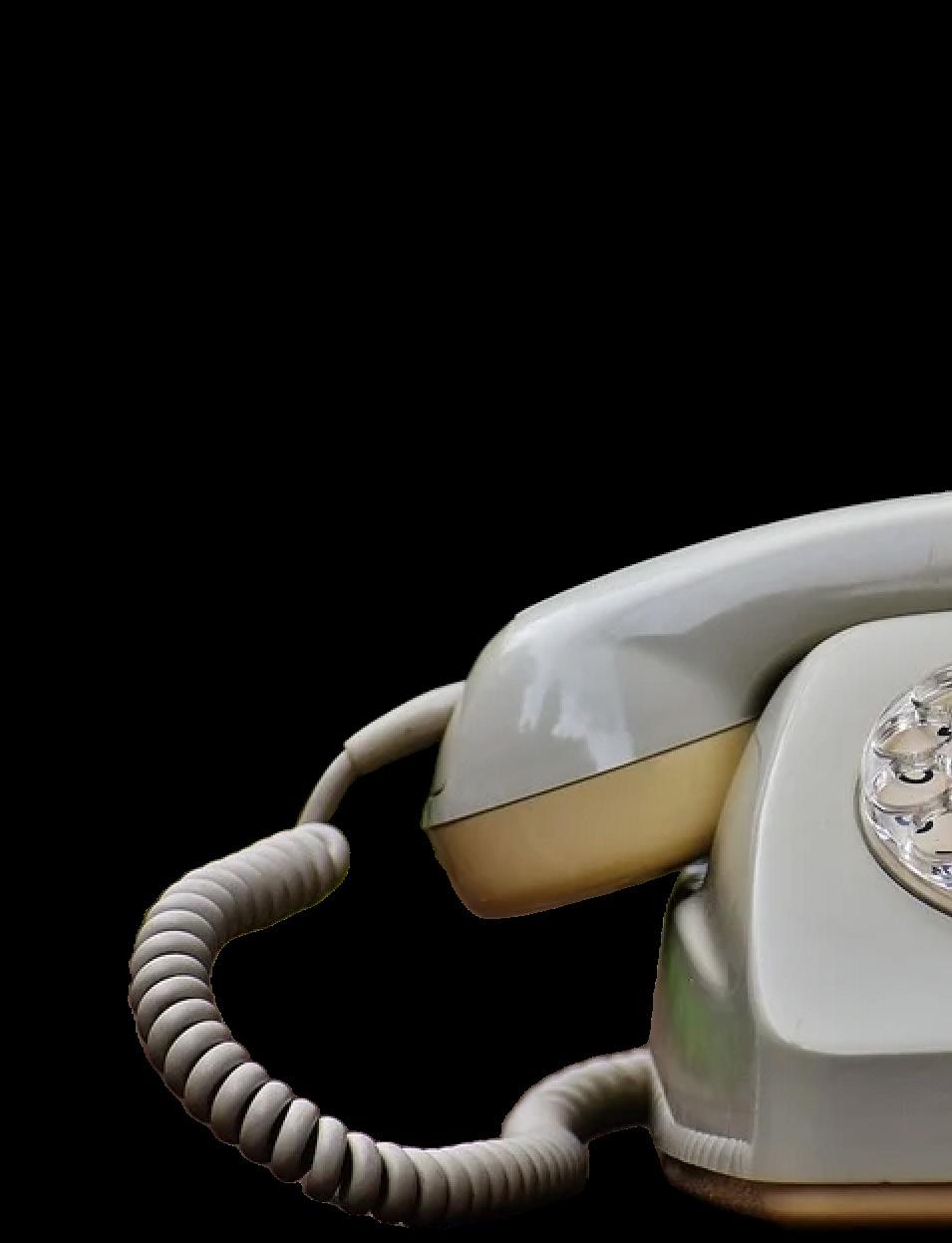

To protect students’ privacy, all names in this article have been anonymized.
“The most frustrating part about the whole process was that, when I came back to school the next term, nothing had happened. Absolutely nothing had been done to help me even though all these people said, ‘Yes, we’re going to help you,’” said Jordan, a student who reported his sexual assault to M-A’s administration.
The M-A Chronicle interviewed five students and alumni about their experiences with reporting sexual assault and harassment at M-A. Their experiences varied widely, but all were upset with the process and in administration’s lack of follow-through. The Sequoia Union High School District has a specific Title IX procedure outlining how to handle reports of sexual assault and harassment, but it appears M-A’s administration too often disregarded this process, leading to an unclear and uncomfortable process for survivors that had some even regretting their decision to report.
The M-A Chronicle brought the concerns in this editorial to Principal Karl Losekoot and Assistant Vice Principal (AVP) Nicholas Muys and both agreed to work to improve the current system based on the reports of these survivors. Losekoot said, “We need students to report incidents for this campus to be a safe environment for all students. We see students are asking for more support in the process and we want them to feel supported, too. We want to make reporting as safe and comfortable as possible.”
Title IX guarantees all students equal access to education. When a student experiences sexual assault or harassment, they are robbed of this right. Thus, when a school receives a report of sexual assault, they must provide supportive measures for the survivor, and, as Muys said, “ensure that we have a thorough enough understanding of what happened to ensure the access to public education for the complainant.”
Supportive measures are designed to preserve a student’s education and must be offered to the survivor regardless of the status of the investigation. They can include no-contact orders, class schedule changes, and extensions on assignments.
In an instance where there is ongoing danger, schools must report the assault to the police, who conduct their own investigation and contact parents.
Jordan said, “[Administration] promised that they would get that person out of my
but Lauren said, “I could only go once because they never followed through with it—they pretty much didn’t do anything.”
Not only did administrators fail to provide adequate supportive measures, they also did not sufficiently inform interviewed students of their options moving forward. Specifically, once students reported their assault, administration failed to explain what a Title IX complaint is and how they could file one, which is legally required.
Beyond this, the entire process seemed chaotic to survivors.
Anna said the entire process was confusing. “It was overwhelming because I had no idea where to start and also it’s a very emotional thing to be going through.”
Lauren said, “[Administration] doesn’t really have a set protocol at all, and the situation is already scary, but it also seems like they don’t know what they’re going to do. It’s kind of just confusing—they’re adults, they’re running the school. They should be aware and knowledgeable, but they seem really confused, too.”
Though there was some degree of investigation in all cases where interviewed students came forward to administration, the process of reporting itself was unnecessarily uncomfortable and stressful for students.
Shiwali Patel, Director of Justice for Student Survivors & Senior Counsel at the National Women’s Law Center, explained, “The people who conduct the interviews and the investigation should be trained on how sexual assault impacts someone and might impact their ability to recall certain facts or details so the investigation is conducted in a way that’s traumainformed.”
Another student, Molly, said she felt pressured to reveal more details than she wanted to during her interview with an M-A administrator. She said, “I felt uncomfortable, he kept pushing.”
In Lauren’s case, her ex-partner and his friends circulated an explicit video of her. After she reported the incident, she said, “It was just me alone in this room while they had a bunch of other guys in a separate room.” She continued, “[The female staff member] understood better what it’s like to be like a girl. [The male staff member who helped handle the case] couldn’t really understand why I was so scared or why I was crying so much; he just seemed impatient.”
Lauren also had an inexcusable interaction with a staff member. After over


four hours of interviewing, Lauren was accosted by her assailant’s coach, who is also an M-A teacher, while walking down Pride Hall. “He came out of nowhere while I was in the hallway and started yelling things at me like, ‘This guy’s a good kid, he would never do something like that!’ And then [an administrator] started screaming at [the staff member.]” Afterward, she said, “I cried and went home. I just couldn’t. It was just embarrassing.” This staff member is still at M-A.
After Jordan reported his assault to administration, he underwent an interviewing process with an administrator and was eventually directed to M-A’s then School Resource Officer (SRO). However, he said it was a demeaning process and the SRO even insinuated that Jordan could have prevented the assault had he wanted to. He said, “The SRO was a complete asshole. He told me if I didn’t want to do something, I should just not do it.”
“If
your Title IX Coordinator is your principal, really how many of their work hours are they able to spend toward Title IX? And that reflects how much value the school is placing on Title IX compliance.”
Principals (AVPs). Patel said, “If your Title IX coordinator is your principal, really how many of their work hours are they able to spend toward Title IX? And that reflects how much value the school is placing on Title IX compliance.”
It is important to have a Title IX coordinator who is not an administrator because, in instances where a student reports anonymously, it is the Title IX coordinator’s responsibility to decide whether to initiate an investigation or file a formal Title IX complaint on their behalf. Title IX coordinators are required to file a complaint “when a safety threat exists” or if not doing so would be “deliberately indifferent,”meaning clearly unreasonable. A school administrator is less likely to file a Title IX complaint against their own school or staff than an independent coordinator.
The District does have a separate Title IX coordinator, Jarett Dooley, who works with site-level Title IX coordinators. Muys said, “We work hand-in-hand with the district when we even think that we’re dealing with a potential Title IX case.”
Dooley explained, “Every person involved in the Title IX grievance procedure is properly and routinely trained on Title IX, including the grievance procedure, supportive measures, impartiality, and how to conduct an investigation including the use of a trauma-informed approach.” Losekoot and Muys confirmed all AVPs receive Title IX training.
TThe M-A Chronicle requested a statement from the SRO involved about the allegations. Commander Dan Larsen responded instead; he said, “We acknowledge the importance of including diverse perspectives in discussions surrounding sexual assault. Individual experiences can vary significantly, and one person’s perception may not necessarily reflect the reality of our approach or the professionalism of our staff.”
M-A’s Title IX coordinator is Principal Karl Losekoot. Across all interviewees, Losekoot was not involved in the investigation and it was handled by other administrators; this makes sense, as a principal already has a demanding job and should not be expected to also assume the time consuming and important role of Title IX coordinator.
Patel explained that this is the case at many K-12 schools; within our district, four Title IX coordinators are school principals and three are Assistant Vice
hough assault cases often have no physical evidence, school administrations must only prove that the incident occurred to a “preponderance of the evidence,” which means that the assault was more likely to have happened than not. This is much less demanding than the standard in criminal cases of “beyond a reasonable doubt.”
Patel said, “The school shouldn’t use the fact that there isn’t other evidence or physical evidence against the respondent to dismiss the complaint—they still have to conduct an investigation. Even if all the school has is a statement from the complainant and a statement from the respondent, they can still make determinations based on those interviews.”
28Because of this lower burden, schools have the unique opportunity to bring justice to survivors without having them endure the complex and even more demanding process of criminal prosecution that few choose to pursue.
Patel said, “Schools should not rely on law enforcement investigations. Oftentimes, we hear that schools are
delaying their response because there’s a pending law enforcement investigation. You shouldn’t be doing that.”
During Lauren’s investigation, even though she had several witnesses, she was bombarded with questions to the point of exhaustion. Lauren said, “[When I initially reported it,] administration was saying [the video] was child pornography and that it was illegal. But eventually, they were like, ‘We can’t find the video.’ Then they asked me, ‘Are you sure there was a video? Are you sure this video is real?’ And at that point, I was just so done, so I was just like, ‘No, there wasn’t any video. I don’t even know what I’m talking about,’ and invalidated my whole story. I was crying a lot that day. Then they just dropped the whole investigation.” Though it is understandable that administrators would want to find as much evidence as possible, this continued interrogation was unnecessary—the preponderance of evidence standard does not require physical evidence.
All interviewees believe that administration took no action against their assailant. This is once again due to a lack of communication— administration did not communicate to any of the interviewees the outcome of their investigations or if any action had been taken against their assailants. Legally, schools are required to tell students the outcome of the investigation and what action administration has taken against their assailant if they file a Title IX complaint.
Muys said, “We try to communicate as much as we can about what’s happening from a discipline standpoint. It’s a little delicate, but if a case met the criteria for a Title IX investigation, it would eventually involve a full disclosure of findings to all parties.” When students file a formal Title IX complaint, the AVP handling the case will send out a notice of the outcome of the investigation and disciplinary action to both the complainant and respondent. However, it is not necessary for students to file a Title IX complaint to receive this information. Under Family Educational Rights and Privacy Act (FERPA), which is the main law that protects student educational privacy, schools can choose to disclose “the final results of the disciplinary proceeding” as long as the survivor alleges violence or a non-forcible sex offense that violates the institution’s rules. Many survivors report their assaults to gain closure and clarity, and therefore since administration can communicate the
outcome of their investigation, they should.
Lauren said, “I feel like administration didn’t handle the situation. The whole thing was pointless, and I don’t think that something like that should feel pointless.”
Molly said, “I wish administration would have punished [my assailant], especially since it happened on campus. I feel like it wasn’t big enough for his entire life to be ruined, but they could have dealt more directly with him, done something that was local or on campus. I don’t know what could have happened, but I wish something had happened.”
Going through an experience of sexual assault is already complicated and traumatizing on its own.
Anna described the aftermath of her assault: “The next day I just knew—I had never felt the way I felt then. I felt like my body was disgusting and my skin wasn’t mine. I was so sad and confused. I didn’t tell most of my friends and I didn’t tell my family at all because I was just so ashamed. And I think that’s the hardest part of assault: as a survivor, even though we’re not alone, we just feel so alone and isolated.”
Anna decided not to further the investigation because she was afraid of backlash. She said, “He was one of the star players on the football team and a lot of people were like, ‘You’re gonna ruin his career and ruin his life. You’re not even thinking about that.’ There is such a stigma around sexual assault and so much shame that’s brought on to victims and it shouldn’t be that way. It’s not something you could have controlled—you didn’t deserve this and it doesn’t define who you are. I took reporting it to the administration as a way of gaining my power back.”
Another student, Clara, said, “The most frustrating part for me is that he’s still walking around on campus. I see him almost every day. There was a time period where I was genuinely afraid to walk to class alone.”
When Lauren’s friend experienced a type of harassment similar to her, Lauren advised her not to report; she said, “I just told her that there’s really nothing you can do about it.”
Patel said, “The sexual assault data schools report is often not a reflection of what is actually happening, and part of that is because a lot of students don’t report. They might not feel comfortable; they might have had a bad experience or seen other students have bad experiences reporting; they might be scared; they might
be unsure of their rights if they were to report.”
When asked if they would choose to report again, Lauren, Molly, and Jordan all said they would not. Lauren added, “It was a traumatizing day.”
Sexual assault is already greatly underreported; these chaotic and traumatizing processes have deterred students even further from coming forward.
Another anonymous student commented, “I didn’t report my sexual assault to administration. It is less stressful for me to sit through classes with my assaulter than to go through the process of reporting it to administration.”
Clara, who reported her assault on M-A’s anonymous tip line, added, “I wish that M-A was a safer environment where I felt like if I came forward with my name it could actually be confidential. But I don’t trust that with any of these school systems.”
Students should feel comfortable enough to come forward about their experiences, if only to seek out help for themselves.
Regardless of whether a student files a Title IX complaint, administration should guarantee counseling, class schedule changes, and other supportive measures. Additionally, administration should communicate with students about the school’s procedures, their options for moving forward, their rights, and, within the confines of the privacy rights of the assailant, the outcome and consequences of the investigation.
Losekoot said that administration is going to look at ways to ensure supportive measures are documented and followed through on. For example, he said administrators will work on developing a better process to keep students out of classes with their assailants. “We need to document the supports and interventions we provided and there needs to be direct email communication with the student’s counselor in addition to just putting it in Infinite Campus,” he said.
Regarding communication with survivors, he said, “If the case was a ‘full’ Title IX case then we absolutely would have informed them of the outcome. But it looks like there’s a way that we can improve communication in [situations where students don’t file a formal complaint]. As a District, we are moving towards addressing cases through the Uniform Complaint Process and formalizing communication at the end of an investigation. We’re going to make sure we circle back with students and families to tell them where we’re at or what
the end result of the investigation is.”
He added, “I see [from this article] that students want to make sure they know their rights—I couldn’t agree more. If we’re
“I
feel like administration didn’t handle the situation. The whole thing was pointless, and I don’t think that something like
that should feel pointless.”
not communicating that, we need to be communicating that and so we’re going to reflect and make sure that we are very clear on what student’s rights are and what the process is.”
As Anna said, “Sexual assault is way more prevalent than anyone understands, especially within high school communities—you shouldn’t have to go do extensive research to figure out how you can get justice or support.”
Losekoot also said that they would try to make the investigation process more comfortable for students and would consider alternatives for the interviewing process such as having a social-emotional counselor or trusted teacher sit in on the conversations, and explicitly asking students which AVP they’d prefer to talk to.
Though these survivors’ experiences with reporting were harrowing, this does not mean that others should not come forward. While this system is flawed, reporting an assault is still the best way to keep you and others safe.
Losekoot said, “We not only want students to report and feel supported enough to report, but we need students to report in order for this to be a safe environment for all students.” He added, “We can only act on information that we have and I do believe that there are many cases where we’ve helped support students or helped create greater safety on campus.”
Administration often faces an incredibly difficult situation when handling reports of sexual assault. The best way to prioritize the emotional well-being of survivors is through a process that is transparent, organized, and offers easy access to support regardless of whether or not a formal Title IX complaint is filed.
Beyond legal obligations, the main focus of these procedures should always prioritize the emotional well-being of the survivor. Administration should implement these changes and adhere to District policy to improve the reporting procedure to treat survivors with the dignity they deserve.
by Jolene Chu
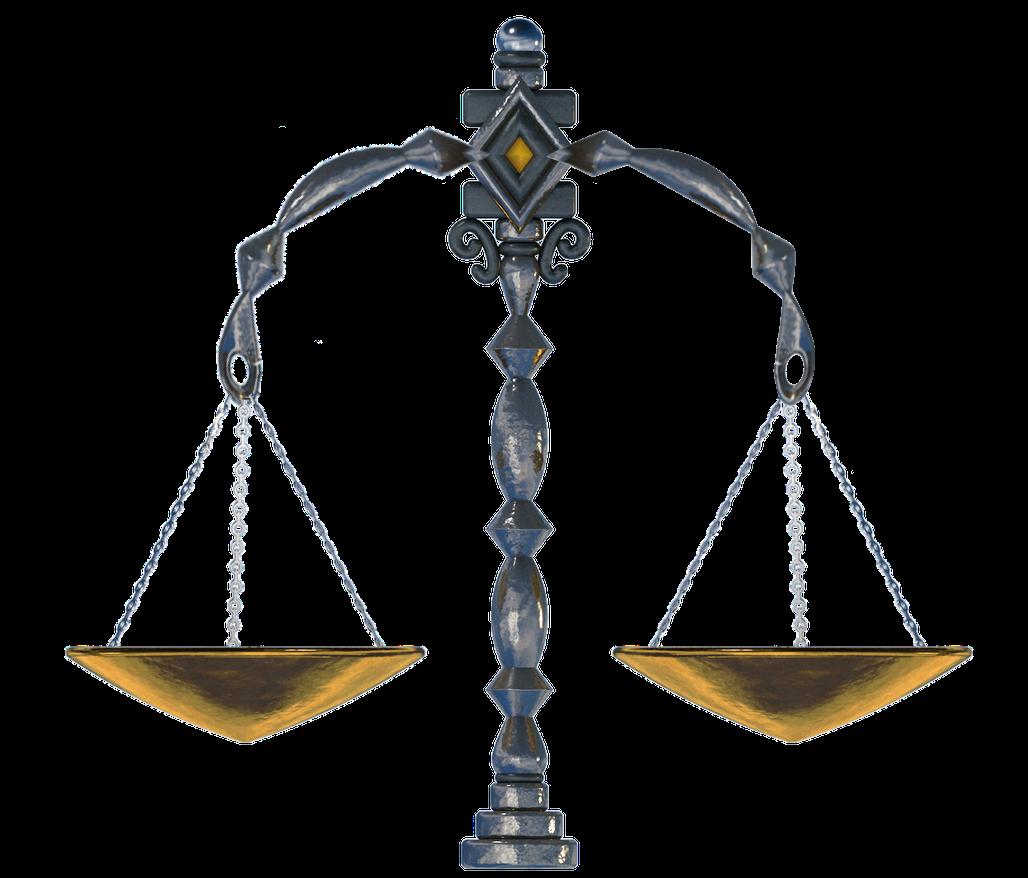





Spanish teacher Nichole Barlow has a one-year-old daughter. She has managed to find time for herself by listening to podcasts on the drive home from school and exercising with her running stroller. Other time-saving methods for Barlow include meal planning and avoiding clothes that require ironing. She added, “Sometimes I’ll have to get my parents to babysit on the weekends so I can get things done.”
Barlow has had to adjust to less sleep. “I feel like I don’t have as much energy as I used to,” she said.
Being a mother has also altered Barlow’s perspective on her students. She explained, “I always thought of my students as someone else’s kid. But now, I think of them as someone else’s baby. Sometimes, I think about what my daughter will be like when she’s in high school, and I think about what some of my students were like when they were toddlers, and it gives me more of an appreciation for students.”


Erika Shepard has a ninemonth-old daughter and recently returned from maternity leave. She described being a mother and a teacher as an “extremely hard balancing act.”
“Usually there are about 12 things that I’m trying to do at once,” she said. “The minute the bell rings, I have to leave and immediately pick up my daughter from daycare.”
The District’s maternity leave policy gave Shepard no choice but to use all her sick days when she was on leave. Now, she only has four days left for “family illness” this semester. “I would have rather taken partial pay while I was gone and kept some of my sick days because I would be less worried about my health, and I could take a day off here and there,” she said. If Shepard or her daughter got sick, she would have to pay for her own substitute teacher.
Shepard shared her struggles juggling her teacher responsibilities with the costs of motherhood. She said, “Last night, my daughter woke up seven times, but I’m expected to still function and do my job at the same level as before.”
“I am very limited in how much time I can give my students. I wish I could be available more often, and I don’t want to come across as uncaring or undedicated, but this is just my reality.”


Spanish teacher Maribel Maldonado has three kids—a ten-year-old, a five-year-old, and a two-year-old.
Due to the grueling hours that being a teacher demands, Maldonado is unable to spend as much time with her own children. She said, “When [my kids] have special assemblies, I can’t attend because I’m here working. If their teachers ask for parent volunteers, I can’t help, and that sucks.”
Being a mother with a busy schedule has also forced Maldonado to make compromises on her teaching. She explained, “Sometimes I wish I had more time to dedicate to a unit. I have this idea of how I want to do something, but I don’t have the time.”
Despite its many struggles, being a teacher-mother has also been fulfilling for Maldnado. “I love teaching and I get to see all of my students’ accomplishments on campus. At home, I love spending time with my kids and seeing how much they’re growing,” she said.


Latin teacher Maria Luisa De Seta has two children—a 14-year-old and a nine-yearold. She shared that teaching can be mentally exhausting, which affects her home life. She said, “As a teacher, you spend your day with younger people and are already tired when you get home, but your kids deserve your full attention.”
Her job also provides insight into her children’s futures, though she is not entirely optimistic. “I know how difficult it is to be a teenager today, and I know the challenges that students are facing. So, as a mother, I’m very scared that my kids will face those same challenges,” she said.
For De Seta, determining priorities is crucial in navigating her hectic schedule. “My family and my kids are my priority, so I try to organize my work around them. This also means that sometimes I have very little time for myself to do things I enjoy,” she said.
De Seta explained that her job is extremely rewarding as she is able to make meaningful connections with her students that extend even beyond graduation. She said, “Even with the complications of being a mother and a teacher, I still think it’s an amazing opportunity that I have. It’s worth it to know that I somehow impacted someone’s life and that part of me is out


To protect students’ privacy, all names in this article have been anonymized.
Because of constricting stereotypes and expectations associated with both the feminist movement and the queer community, queer women often feel like they’re being pulled in two different directions—being either too feminine or not feminine enough. Junior Adri said, “The intersection of my feminine and queer identities is a contradiction because some of my feminine traits create an image of mainstream values, which contradict the less mainstream queer identity.”
“The intersection of my feminine and queer identities is a contradiction because some of my feminine traits create an image of mainstream values, which contradict the less mainstream queer identity.”
Senior Alex, who considers themself more masculine than feminine, pointed out, “Feminism, as it stands today, can be inherently exclusionary because it says that women are powerful because of X, Y, and Z. Sometimes the X, Y, and Z includes being proud of secondary sex characteristics [breasts, wider hips, etc.] and primary sex characteristics [uterus, cervix, etc.] that are mainly associated with women who are AFAB [assigned female at birth].” Grounding our feminism in sex
characteristics makes it harder for trans women and intersex, nonbinary, and genderqueer people to see feminism as a movement where they belong.
Queer spaces, on the other hand, often have an inherent pressure to appear masculine. Androgyny is defined as an ambiguous mixture of masculinity and femininity. However, when you search “androgynous” on Pinterest, many of the outfits incorporate more masculine-styled pieces much more than femininely-styled ones. Some say that this is representative of how our society views femininity as secondary to masculinity, even in queeroriented spaces.
Queer women are often assumed to be masculine, which makes many assume that if you aren’t “butch” you aren’t really queer. Junior Charlotte, who identifies as queer, said, “I’ve been told on multiple occasions that I look too feminine to be queer because I dress, speak, and present in a very feminine manner.” Alex added, “There’s much more space in the queer community for masculine-presenting women than for feminine-presenting women.”
While this is an issue for all queer women, it is particularly problematic for trans women. Confining gender into such stereotypical categories excludes many queer women who don’t fit into one of two arbitrarily defined boxes. Sam, an M-A alumna, described her outward identity as “explicitly a queer femme.” While she said
she fits into the category of a trans woman, she prefers to describe herself as queer. “Queer has always felt like the label that fits all of me, not just my gender identity.” When asked about her femininity, she said, “I don’t present super femininely, and many people assume I’m not a woman based on my voice, but I find a lot of comfort in redefining womanhood within trans spaces.”
Sam said, “Trans women need to feel like they belong, especially with all of the TERF [trans-exclusionary radical feminist] issues going on right now. They should be able to feel welcome in feminist spaces and feel like they’re being heard and acknowledged.”
“Trans women need to feel like they belong, especially with all of the TERF issues going on right now. They should be able to feel welcome in feminist spaces and feel like they’re being heard and acknowledged.”
A large part of why trans women feel excluded is due to society’s expectations of women—both trans and cis. She added, “It’s hard to make a blanket statement of society’s expectations that applies to all women, trans and cis, especially because the discrimination and oppression that trans women face is entirely different than the discrimination cis women face.”
Alex said, “Feminism isn’t just for cishet women.”








by Ellen Forte
An organization focused on reproductive, legal, and workplace rights for women that wanted to dissociate lesbians from the feminist movement. “Lesbianism is the one word which gives the New York NOW Executive Committee a collective heart attack.”

Suffragists were encouraged to present “as attractive, as charming and as lovable” as possible and to avoid exhibiting “mannish” qualities, lest that dissuade men from supporting the suffrage movement.
A feminist lesbian rights group, the first in the U.S, enforced “attire should be that which society will accept” and prioritized being a woman over being queer. “The kids in the fly front pants and with the butch haircuts and mannish manners are the worst publicity that we can get.”

An informal group of radical lesbian feminists that protested at the Second Congress to Unite Women in New York City. One member said, “I’m tired of being in the closet because of the women’s movement.”
The term TERF (trans-exclusionary radical feminist) was coined by feminist blogger Viv Smthye and was used to describe self-labeled feminists who believed that trans women didn’t belong in women’s spaces. Author J.K. Rowling, who proudly labels herself a “gender criticist,” proclaimed that “trans activism is seeking to erode ‘woman’ as a political and biological class.”








by Ben Siegel and Jonathan Weeks

Patriarchy, a term once confined to academic spaces, has recently entered popular media from the blockbuster Barbie movie to Taylor Swift lyrics.
Traditionally, the term refers to a familial or societal structure in which fathers or male figures hold ultimate power. Today, it more generally describes a society controlled by and favorable towards men. This system subjugates women while simultaneously upholding traditional standards of masculinity to create a hierarchy where men compete to be the most “manly.”
While the patriarchy obviously hurts women, the system’s harmful impacts on men are too often overlooked. Dismantling the patriarchy not only limits the oppression of women but also helps men forge meaningful relationships, expand their options in the workplace, and adapt to our evolving society.
It’s unhealthy and unethical for anyone to desire a system that oppresses others, whether that system benefits them or not. Even if the patriarchy did not directly disservice men, we as men still ought to use empathy and should want to help women attain equality.

Over the past couple of decades, men’s mental health has consistently deteriorated. In 2021, men died by suicide almost four times more than women. Plus, men are less likely than women to reach out for mental health support due to stigma surrounding the topic.
Wizdom Powell, a men’s health expert and former White House Fellow, said, “Contrary to the idea that men should suppress their emotions and ‘take it like a man,’ most research suggests that the rigid prescription of masculinity that tells men to be strong and stoic is perhaps the most harmful thing to men’s health. In addition to being linked to poor cardiovascular outcomes, ignoring your emotions is like a
Powell said, “This extremism surrounding masculinity suggests that we’re playing a zero-sum game: that for men to grow and thrive in the world, they have to be at the top of a hierarchy which forces the promotion of maleness in return for ultimate power.”
constant game of whack-a-mole, and it isn’t good for anyone.”
But upholding the patriarchy can also be self-destructive. The patriarchy imposes a traditional view of masculinity that forces men to constantly hold back their emotions and conform to stereotypes of what a man “should” be. While there isn’t anything inherently wrong with men consciously choosing traditionally masculine forms of self-expression, this narrow expectation of masculinity stifles men’s ability to express themselves and their feelings, resulting in adverse effects on their physical and mental well-being.
Removing the rigid standards imposed by the patriarchy also removes burdens placed on both men and women; sharing responsibilities and removing traditional gender roles lifts the pressure for men to be the ones who must do specific tasks. Yes, our world has made large strides toward inclusivity and acceptance, but today’s society is nowhere near where it needs to be. And, it is not just men who continue to hold up patriarchal standards, but women as well. For example, most American women still expect men to be breadwinners in heterosexual relationships, according
to Georgetown University.
Powell said, “This extremism surrounding masculinity suggests that we’re playing a zero-sum game: that for men to grow and thrive in the world, they have to be at the top of a hierarchy which forces the promotion of maleness in return for ultimate power.”
The impacts are even worse for men who express themselves in non-traditionally masculine ways, as they are immediately placed at the bottom of the male hierarchy. According to the Harvard Business Review, “Men are more likely to be harassed when they work in male-dominated jobs and are perceived as too feminine. Research


also finds that men who ask for family leave, something that was historically in the purview of women, are viewed as poorer workers and are less recommended for rewards, compared to female counterparts.”
These narrow definitions of manhood discourage men from taking on the role of a caretaker: only 26% of HEAL (health, education, administration, and literacy) positions are held by men. Fewer than 3% of American kindergarten teachers are male and only 22% of today’s psychologists are male. These professions that people often associate with traditionally feminine traits like empathy and gentleness are unappealing to men because they go against traditional standards of masculinity, even though men could succeed in these fields.
Part of this can be blamed on gendered stereotypes in the media’s portrayal of particular occupations, as well as the lack
from playing with and being emotionally available for their kids which has many negative effects on a child’s development. Some claim that movements for female empowerment lead to a loss of power that negatively impacts men; an article from King’s College reported, “One in six of the UK public overall believes that in 20 years’ time it will be harder to be a man than a woman.”
Perhaps these societal shifts have left the identities of men who desire to cling to rigid standards adrift, but part of the male mental health crisis is a result of men’s resistance to these movements and their failure to adapt, not the movements themselves. Men who cling to traditional gender roles are going to inevitably see women’s empowerment as a threat to their own way of life, whereas men who adapt will see women as partners to collaborate with instead of competitors and inferiors. When some men perceive women’s
Men who cling to traditional gender roles are going to inevitably see women’s empowerment as a threat to their own way of life, whereas men who adapt will see women as partners to collaborate with instead of competitors and inferiors.
of representation of gender diversity within occupational fields. While some think that low salaries deter men from these jobs, men who work in femaledominated jobs tend to be paid far more than women.
Pressures to live up to the expectations of masculinity can even discourage fathers
empowerment as a threat to their conventional roles, they may align themselves with extremist traditionalist influencers like Andrew Tate, who, instead of advising vulnerable men to seek help, further pushes them down pipelines that cultivate insecurity and competition. Paradoxically, this alignment is often
perceived as unattractive by women, leading to a decrease in social interaction between the two genders. These men may feel even more isolated and turn to more extreme ideologies, perpetuating a cycle of loneliness. Single men are also less likely than single women to connect with friends of the same gender due to being taught that it isn’t “manly” to connect with friends, thus causing men to be far more lonely than women.
Though certain men are able to exploit the patriarchy to gain power, the system hurts the majority of men far more than it benefits them. Acknowledging this is critical to moving past an outdated system, uniting people across gender identities, and improving men’s mental health. Dismantling the patriarchy is not just a women’s issue.

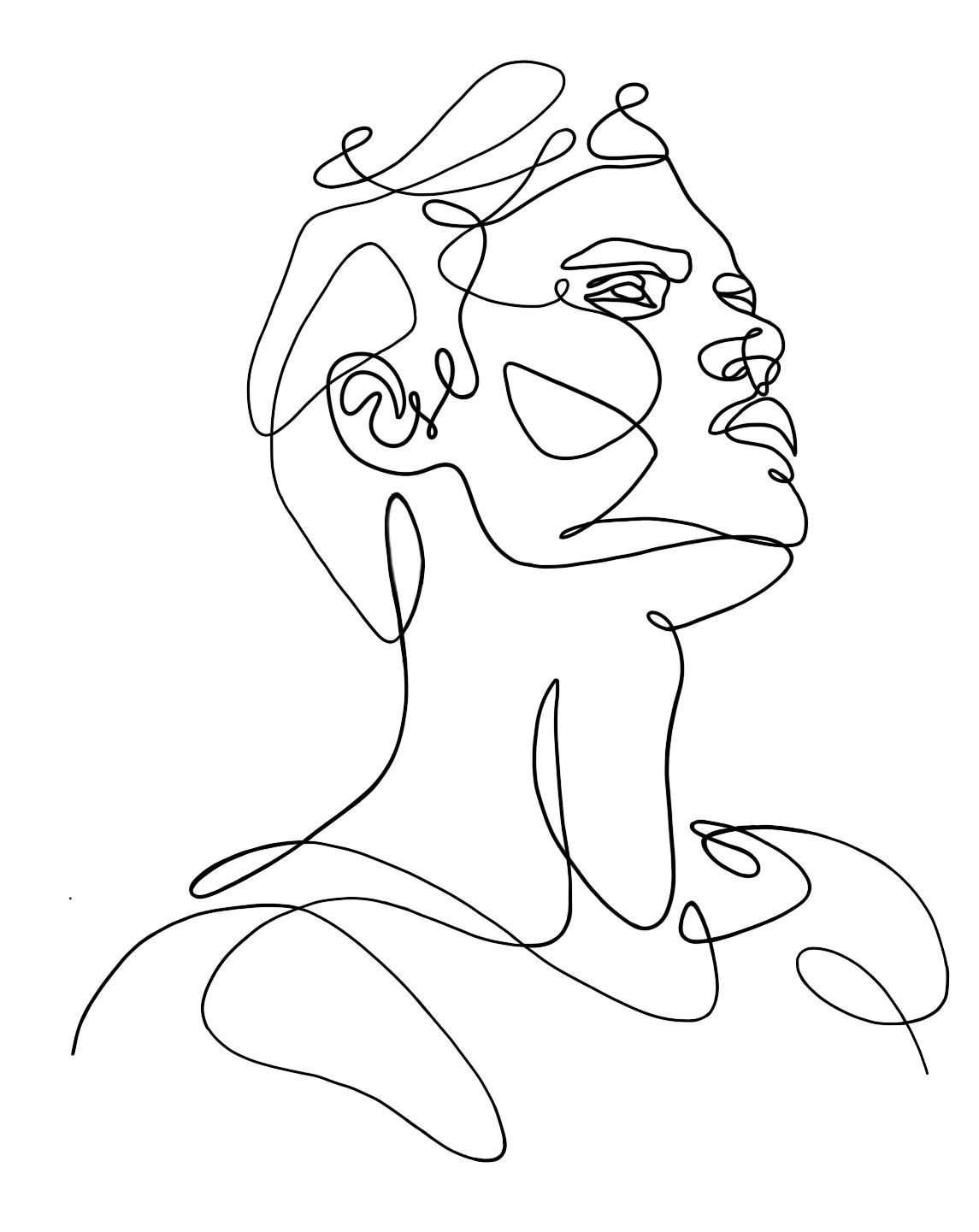







of the
by Sam Leslie



n the past, workplaces, barbershops, gyms, and social clubs were crucial meeting spaces for men. These spaces were an important part of creating valuable male friendships, but they were also often hotbeds of sexism. The feminist movement has shined a light on sexism, justifiably causing male spaces to deteriorate. Though in many ways the loss of male spaces has brought about more inclusivity, equality, and equal opportunities, it has also created a decline in male mental health and an increase in male loneliness. We should root out sexism from
a jumping-off point for male friendships and allows us to freely express our vulnerabilities, essential for our mental health and well-being. Since much of toxic masculinity is about how we appear to women and societal expectations, a maleonly space provides an opportunity for expression without judgment.
Another piece of camp that we can bring into society is how positive male role models help to reform male spaces for good. Male staff members lead by example as they wear gender-non-conforming clothing, paint their nails, and openly share their emotions in a way that fully disregards societal stigma and judgment
Since much of toxic masculinity is about how we appear to women and societal expectations, a male-only space provides an opportunity for expression without judgment.
all-male spaces but continue to promote them, as they can be extremely beneficial to men and can even help to undo some of the worst aspects of toxic masculinity.
One male space in my life is Camp Tawonga, the sleepaway summer camp I annually attend. While co-ed, the camp is separated into gendered cabins (including cabins for gender non-conforming kids) and much of my time as a camper was spent in all-male spaces. Tawonga strongly encourages vulnerability, freedom of expression, and the idea that “being a man” doesn’t have to follow traditional ideas of masculinity. The camp also has activities like the men’s campfire, a gathering where we discuss shared challenges and support each other by outlining goals for selfimprovement.
The shared male experience provides

about what a man should be.
Yet, these male spaces still struggle with some of the classic issues of all-male spaces. Last summer, I was a Counselorin-Training for a bunk of 15-year-old boys who often discussed and sometimes objectified women from other cabins. This is “locker room talk,” which reduces others to sexual objects. One thing we are taught
meaningful relationships and a shift to fairer perceptions of other genders that promote a healthier society.
Today, the thought of a male-only space brings up images of online incels, like Andrew Tate and Jordan Peterson. Just like the male-only spaces of the past, these online cesspools are only more reason to be suspicious of male spaces. Yet, these examples are symptoms of a larger problem: the male loneliness epidemic.
In a 2023 State of American Men survey, 44% of all men had thoughts of suicide in the past two weeks; 65% of men aged 18 to 23 said that “no one really knows me well,” and only 22% of men reported having three or more people in their local area they feel close to or depend on.
“We gender relationships as feminine,” said Judy Yi-Chung Chu in a recent CNN report. “If that’s a feminine thing, it becomes a weakness or a liability if [men] admit to needing friendships.” This fear of being vulnerable also makes it harder for men to build friendships in the first place. Providing boys with more structure can make it easier for them to create these critical and meaningful friendships.
One way to help the next generation of men combat the male loneliness epidemic is to use all-male youth programs as pillars
This idea that speech can be harmful to women, even without them present, is a necessary pillar of a reformed male culture.
at camp is that not only is it unacceptable to make a harmful comment to someone’s face, but that there is also an impact of that language and how it's never acceptable to reduce a person down to their body. This idea that speech can be harmful to women, even without them present, is a
for modeling good relationships and nontoxic behavior. Male spaces like those at











by Tiffany Karp
This year, juniors Antonia Mille and Aliyah Chowdhary-Fitton founded the Feminists: Reformers Throughout History Club to celebrate the underappreciated female activists, innovators, and thinkers throughout history.
Every other Thursday at lunch, students gather to discuss topics in women's history that aren’t covered in M-A’s standard curriculum. Chowdhary-Fitton shared, “Last year, for my group’s National History Day project, we studied the women’s march at Versailles. We tried to find some basic information in our textbook, but this huge historical moment was reduced to just one sentence. I wanted to create a club that highlighted achievements like these that haven’t been talked about enough.”
The club also studies the history of feminism as a whole. Mille said, “For our

lesson on the four waves of feminism, we talked about how the definition of feminism has changed over the years.”
Junior Dominic Auer joined the club due to his interest in feminist issues and their impact on women at M-A. He said, “My favorite lesson was one on female leaders in history. We learned about Cleopatra, and it was interesting to see how she exercised her power in a male-dominated society.”
Chowdhary-Fitton added that the club has studied the four waves of feminism, Black feminism, female innovators, and prominent female figures like the Egyptian pharaoh Hatshepsut.
Stop by the Feminists: Reformers Throughout History Club at lunch in C-15, join @MAfemhist on Remind, or follow @MAfeminists.rth on Instagram to expand your historical perspective.




At their latest meeting, the co-founders led a presentation on their current read, Mothering by Ainslie Hogarth.
Freshman Emma Magdalin said, “I wanted to get more into reading, and I needed recommendations and a group to talk with. These books are definitely out of my comfort zone, but the club has expanded my reading knowledge.”
Instead of setting page counts for members to read each week, the club allows students to decide how far into the book they want to read and sets up meetings in the middle of the month where students can pop in to discuss their thoughts on the
include Bunny by Mona Awad and Cleopatra and Frankenstein by Coco Mellors, both works of contemporary feminist literature. Schmidt said, “Many of these books show a realistic depiction of society and how it treats women all from an inside perspective.”



Aside from favorite reads from this year

In addition to the engaging novels, secretary and junior Morgan Baudler shared, “My favorite part of this club is that it has a very chill environment that inspires me to read more books.”
Flip through the pages of female literature on Wednesdays in G-8 and follow the club on Instagram at @mawomeninlit.


by Huraman Orujov
“I was usually the only woman in my math and coding classes.”
While we may be living in the heart of Silicon Valley—a region recognized globally for technological innovation—computer science (CS) is a field in which women are severely under-represented. Earning a mere 18% of bachelor degrees in the field, the workplace rarely showcases a fair balance of both genders.
However, at M-A two out of three CS teachers are women. Tomiko Fronk teaches AP CS Principles and Cynthia Donaldson specializes in AP CS A, or AP Java.
Donaldson was first introduced to the world of technology through her father, a mechanical engineer. “He really wanted us to be astronauts, so he bought us one of the first home computers called the VIC-20,” she said, adding, “There is something about a girl having her father’s permission to pursue a male-dominated world that helps a lot.”
Donaldson shared a talent and affinity for math and studied it at the UC Berkeley, where she also learned coding. She explained, “I went to Cal thinking I would major in math, but I took as many coding classes as I could just because it was on the rise. It wasn’t super popular yet, but people were starting to code.”
However, the courses were dominated by men. “I was usually the only woman in my
Years later, Donaldson still sees the same phenomenon at M-A. She said, “My classes are still easily two-thirds men. I don’t know why that is.”
Donaldson hopes female students are not intimidated by the course. “The

time had the least number of females than any other engineering field,” she explained, noting that she quickly decided that was not something she wanted to pursue.


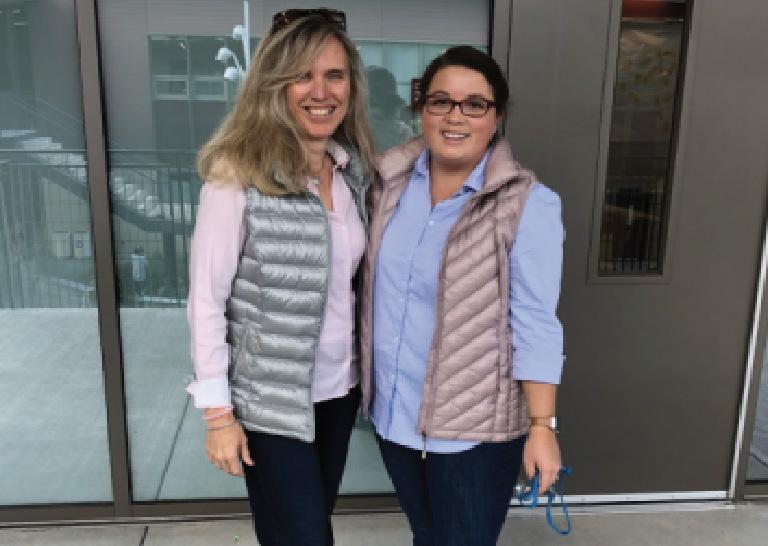





really well in the class.”
She also wants students to understand that taking CS does not mean you have to become a computer scientist, but it will provide you with a helpful skill set for many different professions. She said, “Whatever job you choose to pursue, you will be coming in with a wider skill set than most. In most fields nowadays, having a little bit of coding knowledge absolutely gives you a leg up.”
she described. “I turned to the guy sitting next to me, and he was playing video games while the lecture was happening. I asked him a super simple question like, ‘What is the homework assignment?’ and he looked at me, didn’t say anything, and then went back to playing his video games.”
Fronk was determined to ensure that this discrimination didn’t happen at M-A, so when she and Donaldson started at the school in 2014, the pair worked together to develop an inclusive and welcoming program.

Fronk’s passion for teaching CS stemmed from her own academic experience. “I started out as an electrical engineering major in college, which at the




She advised, “Don’t be afraid to try. CS is challenging, but I do think that the teachers



here, like Ms. Donaldson, are so kind and willing to work with you. If you are up for the challenge, there’s lots of support here.”
Donaldson and Fronk’s stories reflect that discrimination is still prevalent in STEM, but they also serve as a reminder to all young women that they are capable of achieving success in any field they desire.
spaces that women were historically discouraged from.
M-A also boasts many talented female students in stem fields. Heidi Chen, a junior on the robotics team, was first introduced to the field sophomore year through Mrs. Donaldson.
“Don’t be afraid to try. CS is challenging, but if you are up for the challenge, there’s lots of support here.”
Donaldson and Fronk have created an inclusive CS community and continue to inspire every student to reach their coding goals, in the hopes of a future that sees gender parity in professional and academic


Chen mentioned M-A’s open inclusive environment. She said, “Obviously, it’s a difficult to find some common ground and common struggles between people since the amount of women who participate in robotics is pretty small in comparison to






the male demographic. However, people aren’t as focused about gender and more about working towards a common goal, which is to finish the robot on time for competition.”
Her advice to other girls interested in robotics was, “Be open to learning new things; you can play a huge role in robotics simply from absorbing a lot of information at a time. In my opinion, you can learn a lot from your experience in robotics, but it doesn’t mean it’s not fun either and it’s a great place to explore your future interests, whether it’s in business or engineering, and you can meet a lot of great people along the way.”
















by Allegra Hoddie


“We still have a very masculinized, whitedominant view of leadership. Anyone who doesn’t fit that mold is seen differently,” said Marianne Cooper, a sociologist at Stanford University. A pervasive bias afflicting nontraditional leaders was captured in professors Alexander Haslam and Michelle Ryan’s 2005 glass cliff theory. It describes a continuation of the betterknown glass ceiling theory, a metaphor in sociology that refers to an invisible barrier or “ceiling” that hinders women’s advancement in the workplace because of stereotypical expectations and heightened household responsibility.
In many ways, women have shattered this “glass ceiling.” They are now enrolling in universities at higher rates than men—56% compared to 44%—and taking more leadership roles in historically male-

dominated industries, such as computer science and finance. However, gender biases in the workplace persist even after women achieve perceived success; the glass cliff theory explains that women are more likely to be promoted when companies enter ‘crisis mode’ to turn the company around. When women enter these positions of power, there are preexisting expectations for them not placed on their male counterparts, essentially setting them up for failure.
“What often happens is that women are held to different or higher standards,” Cooper said. Companies that promote women to high-pressure positions—often for the first time in their corporate history—are far more likely to be experiencing precarious circumstances, a detail critical to understanding the glass cliff theory.
When these women are put in charge of companies in crisis and fail to turn them around, organizations blame their new leader instead of recognizing the systemic, pre-existing issues that more directly contributed to the failure. The failures of these women’s companies following their leadership are perceived as a shortcoming of their leadership, perpetuating the idea that women are not suited for their role as leaders. So, when companies are selecting positions in the future, they are more likely to underestimate the skills of powerful women because of past criticism and default to “stereotypical” male leaders.
The glass cliff is part of a larger trend of society holding women—especially women of color—to impossible double standards in business and politics. Politicians are tasked with presenting themselves as both qualified and personable; female politicians must additionally toe the line between being “too nice” or “too bossy”— standards that men don’t face to nearly the same extent. While FiveThirtyEight reports only 13% of people believe that men are better suited for politics than women, a woman caught in a scandal is typically punished more harshly than a man in the same situation.
These issues disproportionately affect women of color. “The glass cliff is also for people of color—any group of people that aren’t as commonly culturally associated with leadership,” said Cooper. In 2020, after a push for diversity in the publishing industry, Simon & Schuster’s Dana Canedy became the first Black woman to lead a major publisher but soon left after the company received backlash for publishing the autobiography of Mike Pence. In the immediate aftermath of the January 6th insurrection and the resignation of the previous chief of police, Yogananda Pittman was appointed as the chief of the Capitol Police and became the first woman and African American to serve in that role. She left six months later.
Theresa May, the U.K.’s second female prime minister, took office immediately after the country voted to leave the European Union in 2016 and hardly held her seat for a month. The untraditional circumstances facing the U.K. inspired a historically untraditional leader, yet she was uniquely set up for failure. “Theresa May had inherited the biggest political challenge for any U.K. prime minister since 1945–and proved unequal to the task,” wrote Politico.
Many leaders of prominent organizations have fallen off the glass cliff, such as women who lead the Secret Service, Yahoo, Reddit, Hewlett-Packard, Lehman Brothers, and CBS. The New York Times appointed their first female Editor-inChief when newspaper sales were down 73% in 2014.
The glass cliff theory does not claim that all promotions set up women for failure, nor that gender discrimination is too extensive for women to ever take the helm in the future. Rather than becoming trailblazers, female leaders often publicly fail as a result of pre-existing problems and wind up reinforcing negative stereotypes about women’s leadership. The glass cliff theory argues that gender-based discrimination is still very much alive in politics and the workplace and just as invisible as its predecessor.

Nowadays, it is literally impossible to get a girlfriend.
In a world where feminism is corrupting breedable females with “opportunity” and “choice,” men are being held to unreasonably high standards of treating females like actual human beings. Luckily for you, though, I have three easy tips to get yourself a loving mate who will tend to your every need and forget all about those silly little feminist ideals when she realizes how jaw-droppingly manly you are.
Women—even if they deny it—really just want to be told what to do. Hence, they look for an intelligent partner who can forcefully guide them to make correct decisions. To attract a fertile female, assert your intelligence. A simple way to practice this is to walk up to a woman with a Ph.D. in engineering in a coffee shop and ask her if she needs your help. Did she just try to tell you that she doesn’t need your help? Women can be emotional. Don’t worry, you’re here to save the day. Does she seem stressed? Interrupt her and instruct her to calm down. Comfort her by talking about the expertise you’ve gained from scrolling on Reddit for the next two hours and tell her not to worry if she misses the deadline because she could always just flirt with her boss. If all else fails and she still seems uninterested, just tell her the truth—girls always appreciate honesty—that she’s stupid and that you were only interested in the first place because she’s hot. With confidence like that, no woman will refuse your advances.
Whatever you thought I was going to say here—bring her flowers, tell her you love her, memorize all of her favorite things— forget that, that’s a beta move. The only way to show a girl you care about her is not to care. Leave her on read for three days, ignore her when she talks to you, and tell her how much you like that one other girl who’s just so much more perfect than she is (bonus points if it’s her best friend). These strategies will ensure that your relationship is emotionally unstable and therefore keep it interesting (like in the movies). Also, comment often about what she’s eating to show your investment in her physical health (and keep her at the perfect weight). If you want to go above and beyond, come up with cute little pet names for her. Slut, hoe, and bitch are classics, but don’t feel limited in your creative expression!

If a girl tells you she doesn’t want to go out with you, don’t give up hope. She’s just playing hard to get. If she tells you that she’s dating someone else, or that she really wants to just focus on herself right now, or that she’s lesbian, or that she’s going to


by Lindsay Park and Tessa Ellingson
“Men are silent stoics; women hysterical hypochondriacs.”
The diagnosis of “hysteria” has historically been used as a catch-all term for complaints of discomfort largely reported by women—including anxiety and irritability—making the term dangerously convenient for dismissing genuine health concerns as overreactions. “Hysterical neurosis” was finally removed from psychology textbooks in 1980, yet its legacy lives on. Several studies have shown that female patients complain about higher levels of pain more frequently but are taken less seriously by medical professionals. A study published in the journal of Law, Medicine, and Ethics concluded that a primary factor for the imbalance in treatment was gender bias—specifically, “A long history within our culture of regarding women’s reasoning capacity as limited.”
Black women are an even greater target of discrimination within the healthcare system, even when socio-economic factors are controlled for. Black women are less likely to be prescribed pain medication by emergency room physicians, and three times more likely to die in childbirth than white women.

In a Q&A session with the Greater Good Magazine, after reading anecdotes from women seeking diagnoses, feminist author Maya Dusenbery said, “There was an implication that their physical symptoms were all in their heads, and they were being offered antidepressants or told they

were ‘making their symptoms up’ to get attention.”
The obstruction of medical diagnoses is just one of the many effects of gender bias in treating women. Endometriosis, a chronic illness that causes debilitating uterine pain during menstruation, is estimated to affect at least one in ten women but takes an average of 7.5 years to diagnose. This means that at least 10% of women have to live with chronic monthly pain for three-quarters of a decade before receiving treatment. Another 2017 study found that women had to wait up to 31 days longer than men to receive their diagnosis after first recognizing cancer symptoms. When experiencing a heart attack, women are seven times more likely to be misdiagnosed and sent home.
When women are getting intrauterine devices (IUD), a form of birth control, they are told to take the same kind of medication used for light headaches. According to a 2013 study, medical providers estimated the pain to be around 35 on a scale of 100; patients rated the pain as 64.8.
An anonymous student shared her experience getting an IUD insertion. She said, “When I asked the doctors if they would give me anything for the procedure, they told me I could pop an Advil or a Tylenol. I know people who have had extremely painful insertions, and it feels absurd that they don’t offer anything.”
A second anonymous student was on four different birth controls before finding one that fit her, and found the process
surprisingly difficult and unclear. She said, “I tried the Nexplanon implant because doctors said it was less hormonal and had few side effects. But, I was super fatigued— which they later ended up telling me was a possible side effect. I had to come home from school every day for a month straight because I was so tired that I needed to take a nap for half the day.”
When doctors removed the implant, she explained, “It was one of the most painful experiences I’ve had in my entire life. They told me it would be easy because they just had to push it out, but they were digging in my arm for so long because it was surprisingly difficult for them to find.”
She added, “I felt supported, but they did not give enough information to me and my parents, which made us really upset because of all the painful things that happened.”
Dr. Elizabeth Comen said that when healthcare providers don’t seem to be acknowledging legitimate concerns, it might be best to find a new doctor. “This can be easier said than done […] but a trusting and respectful relationship with your healthcare provider is every patient’s










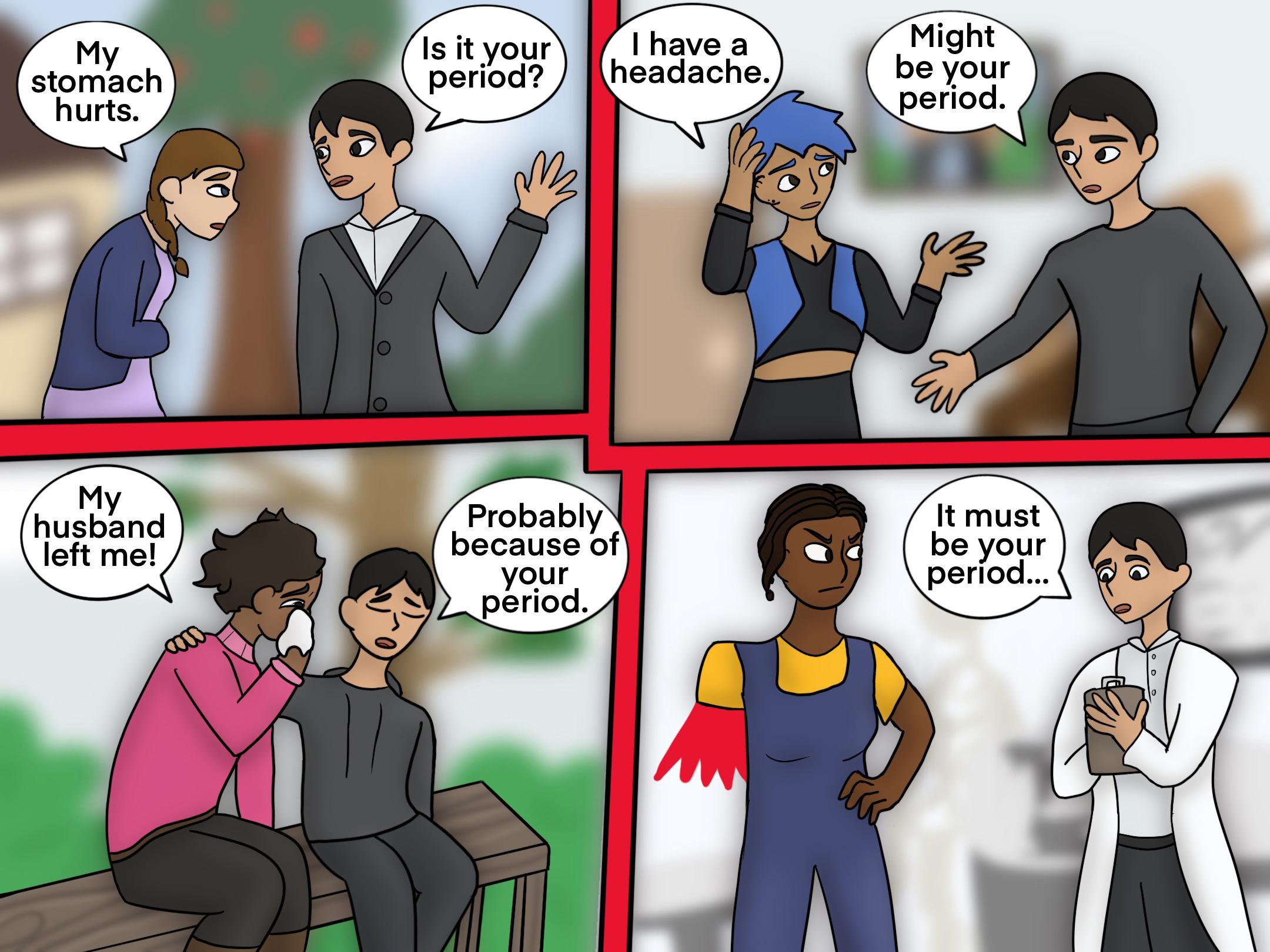





by Sarah Larson





